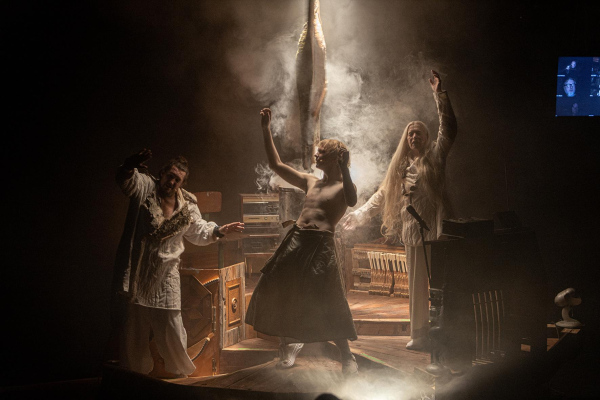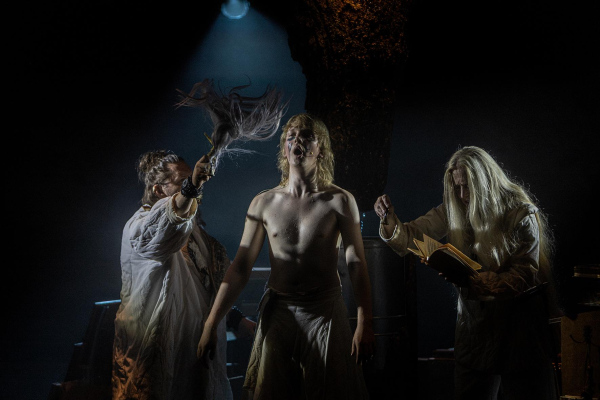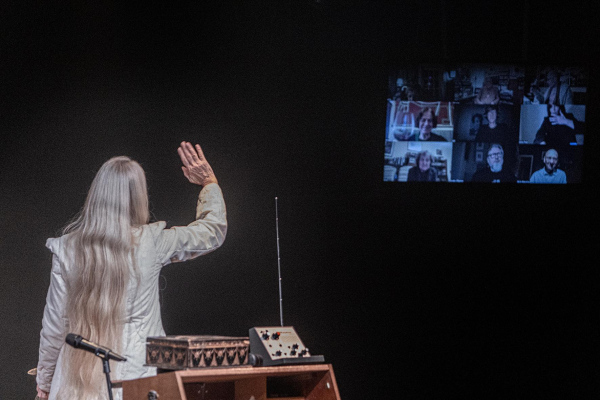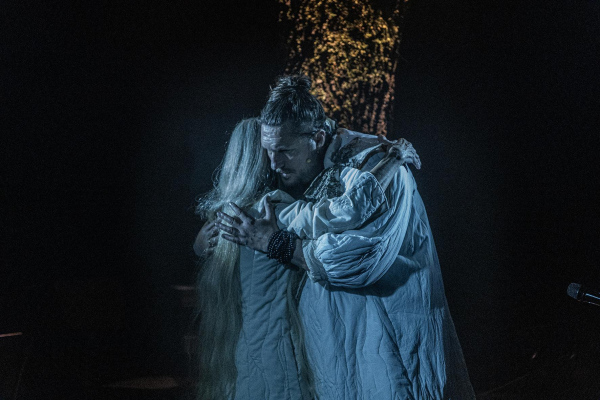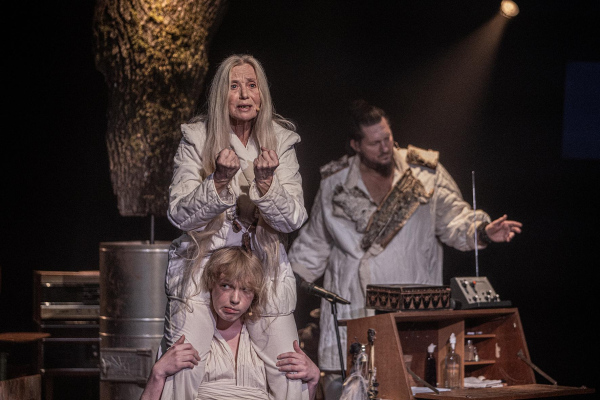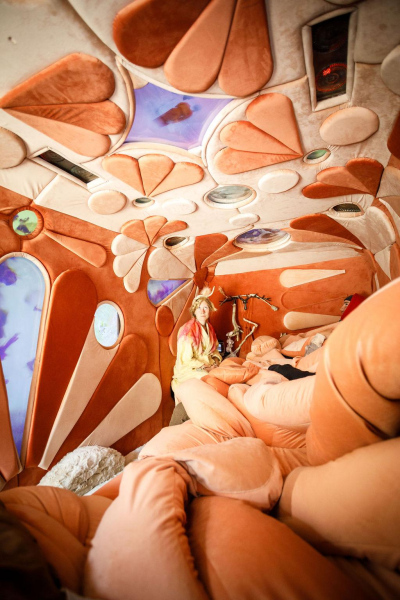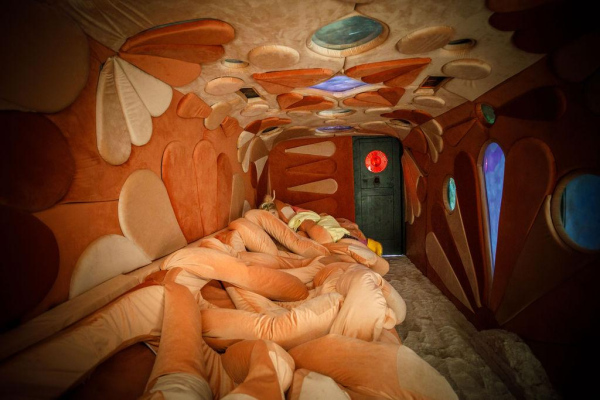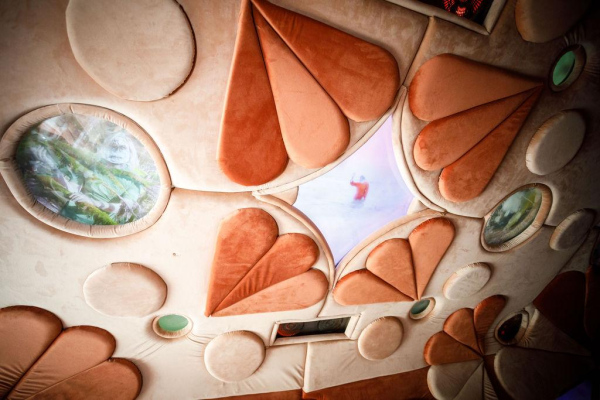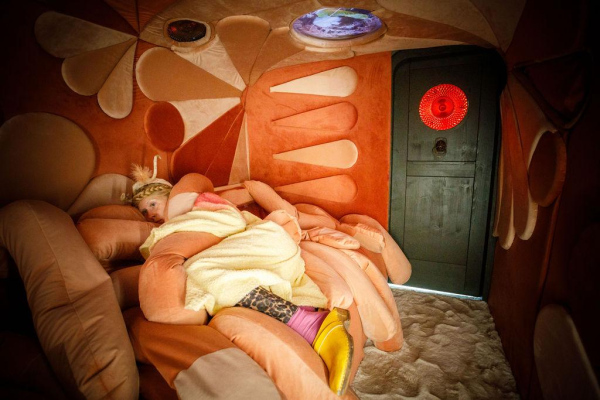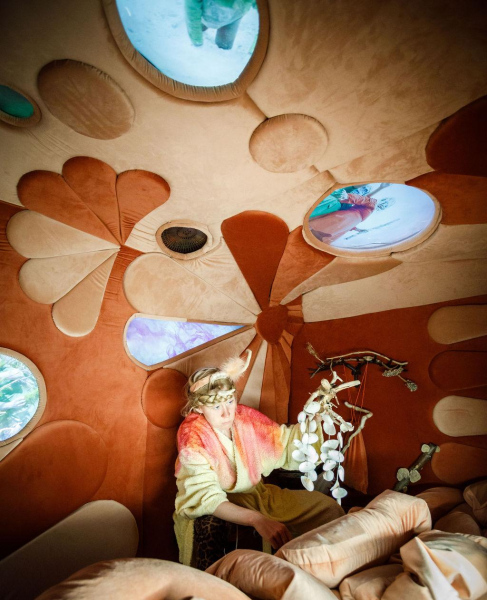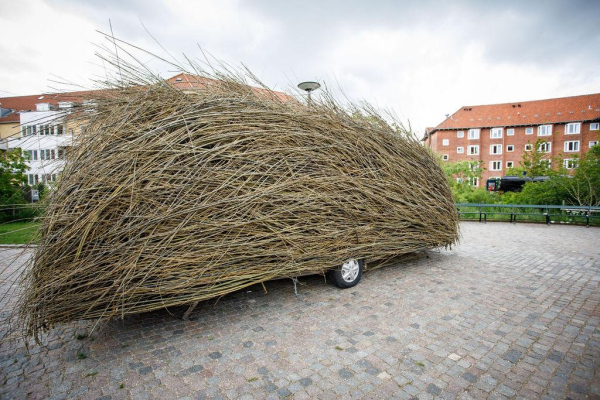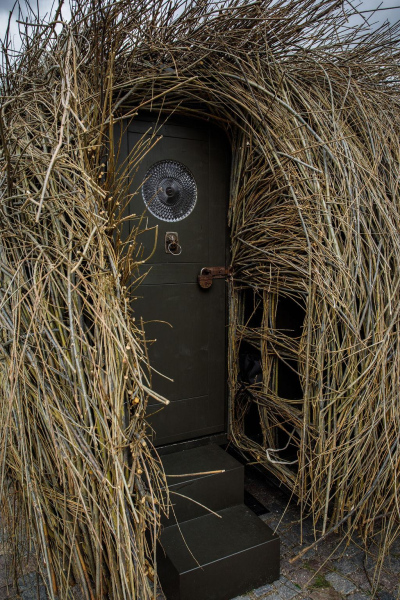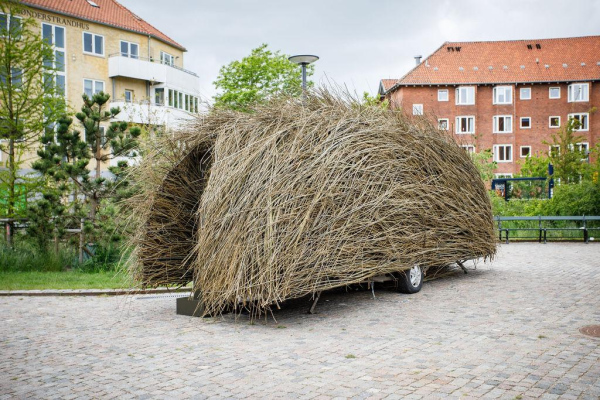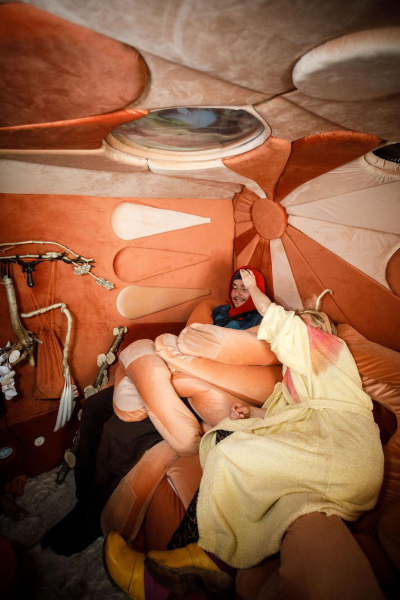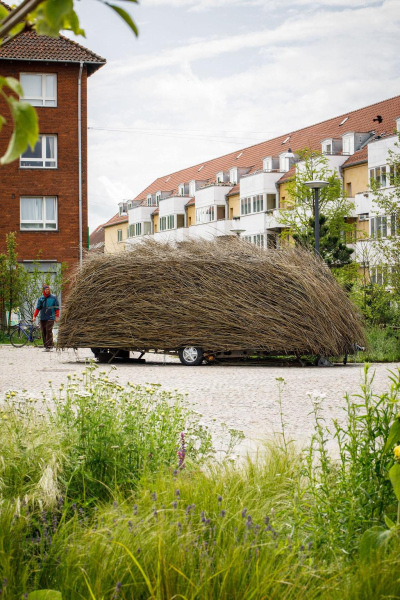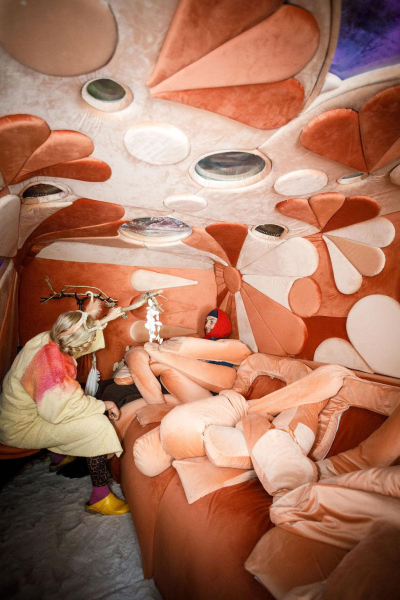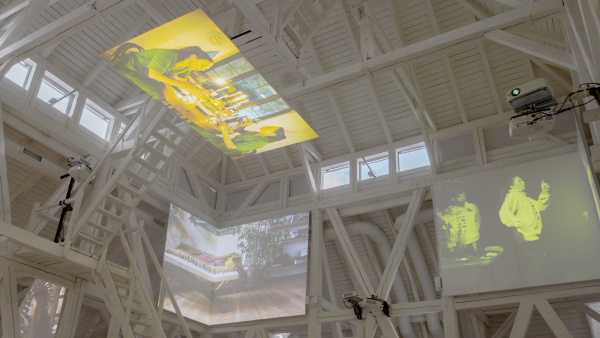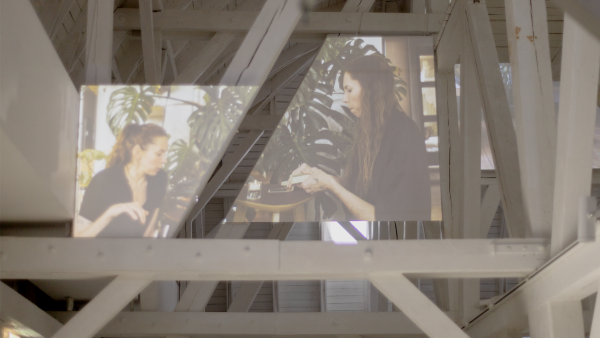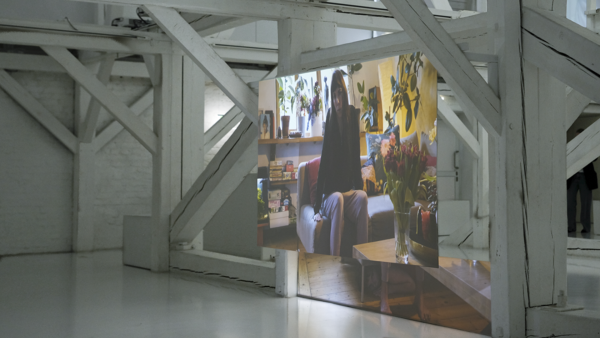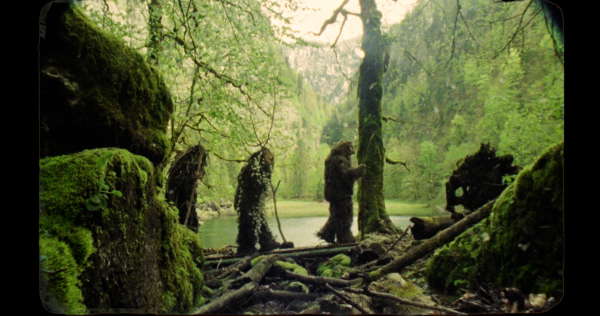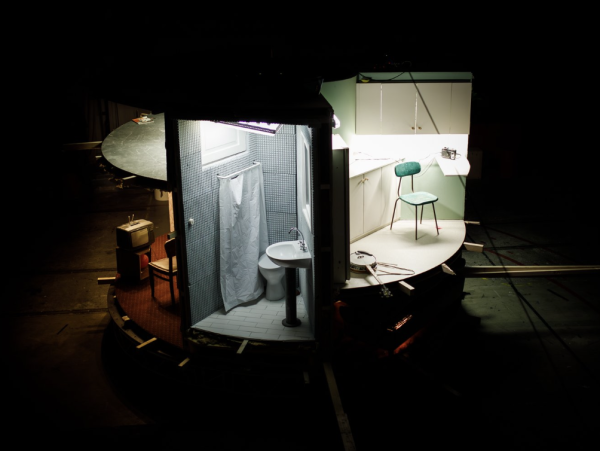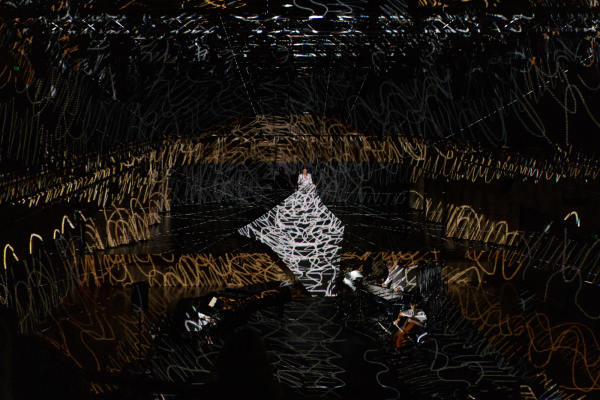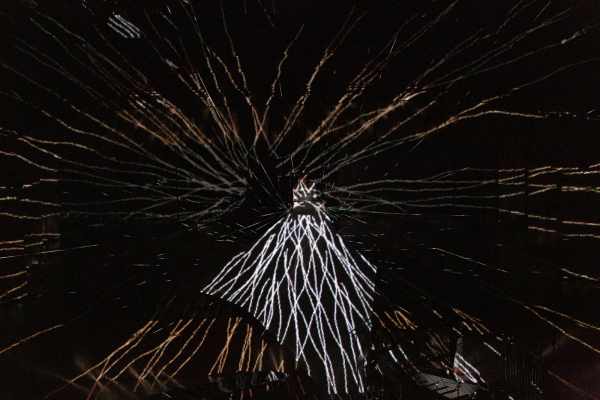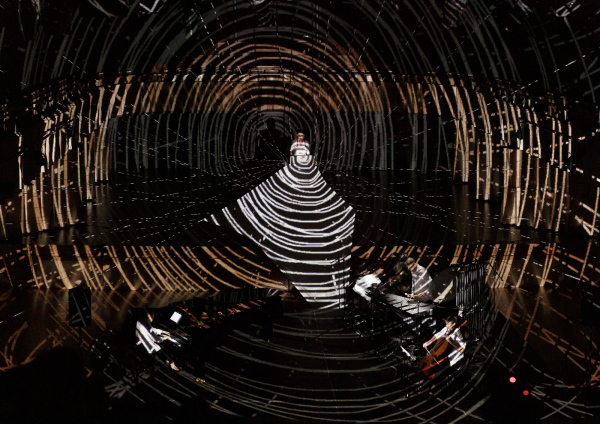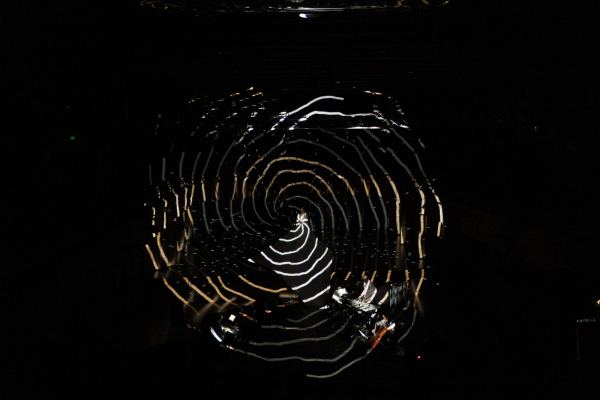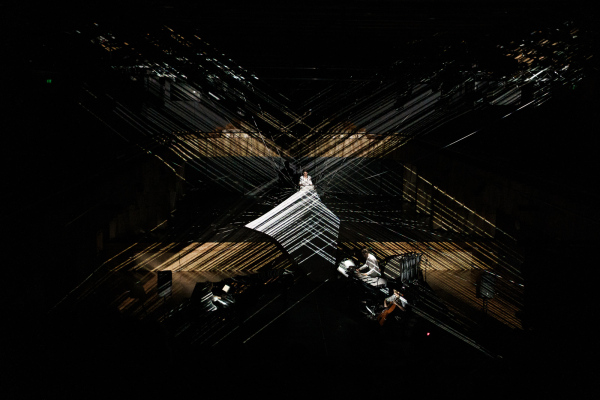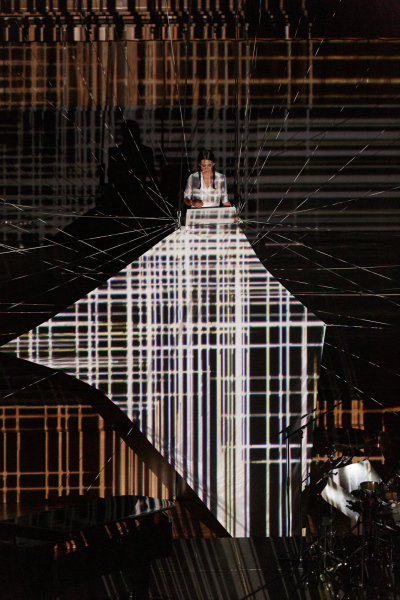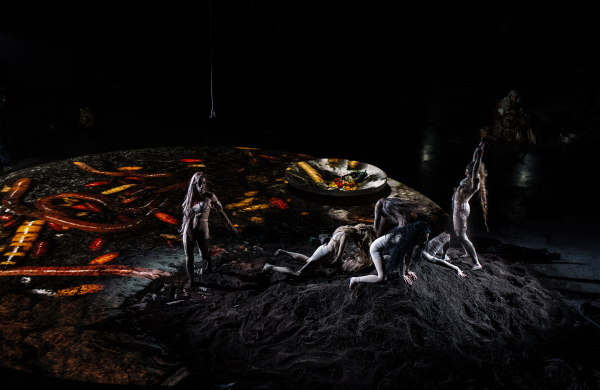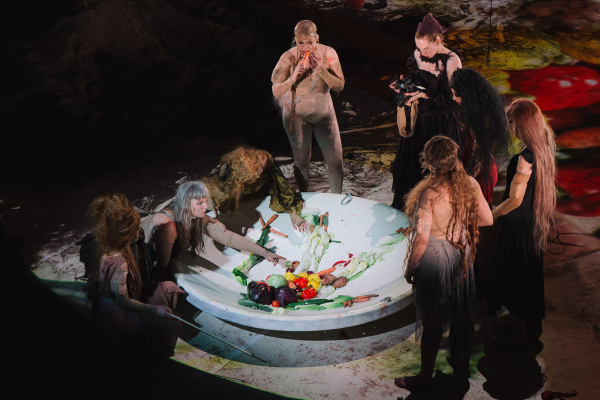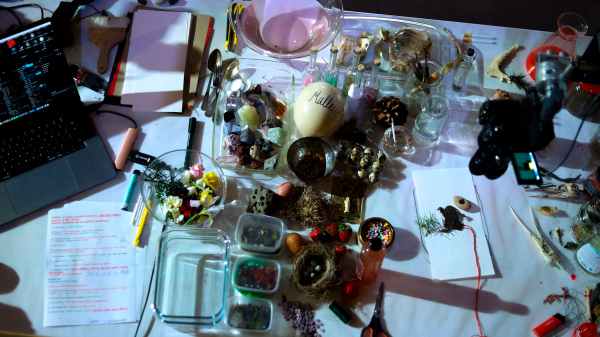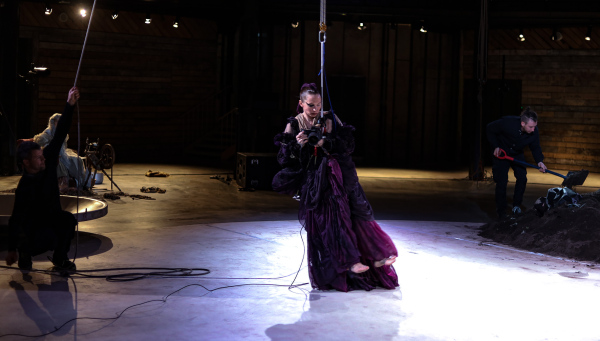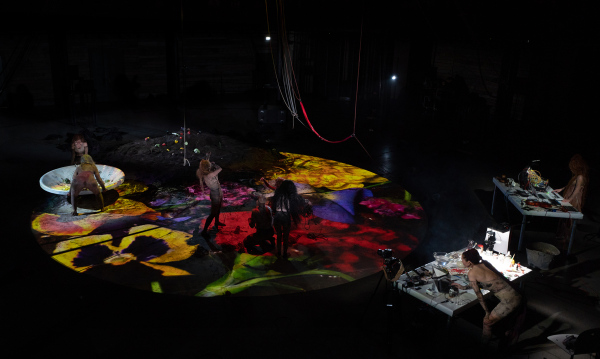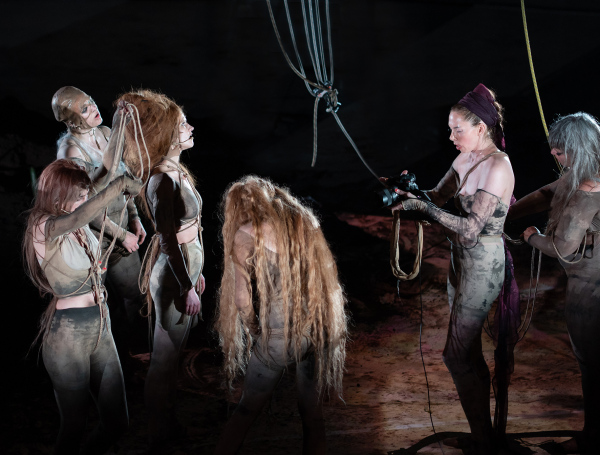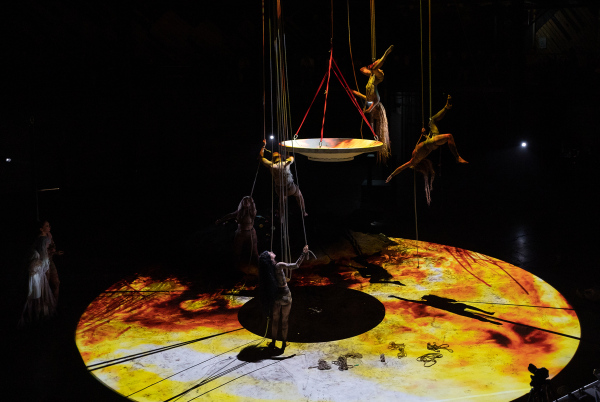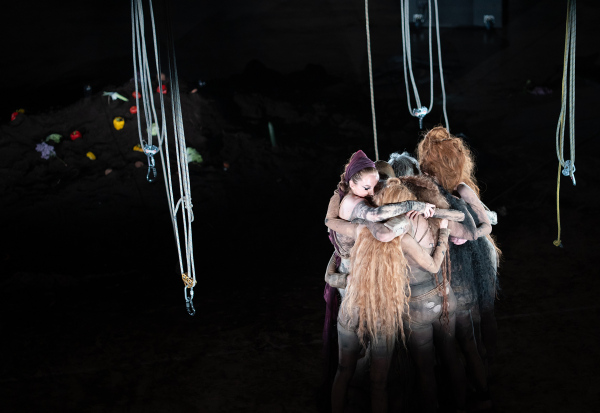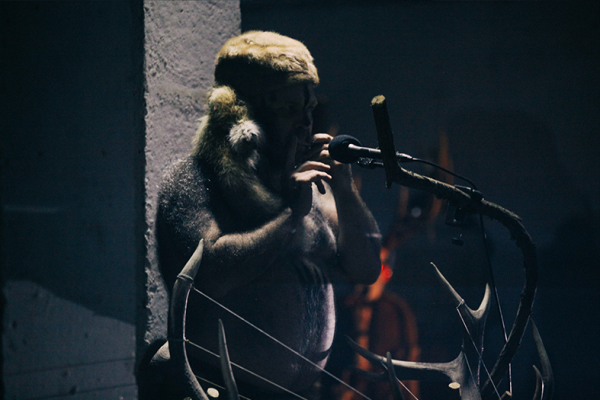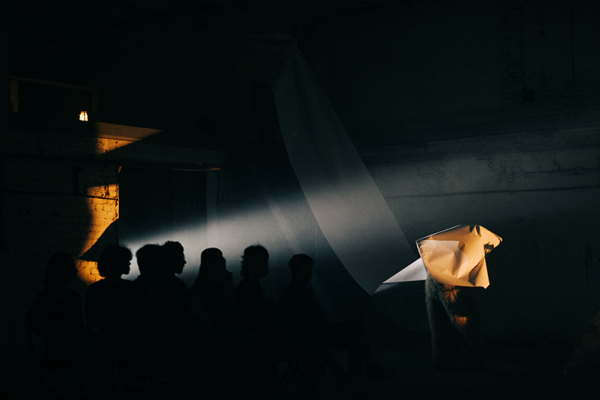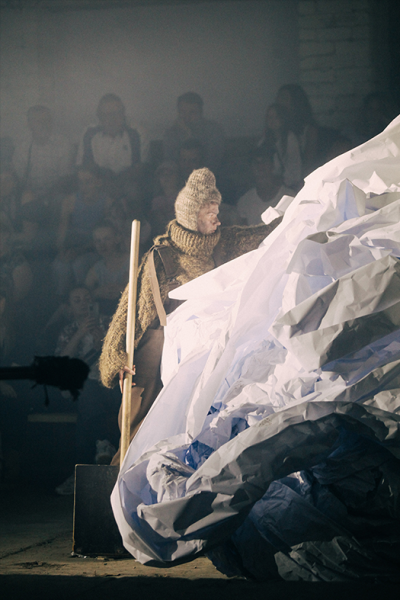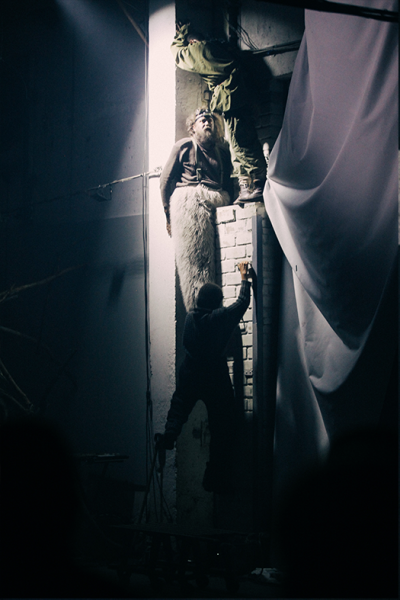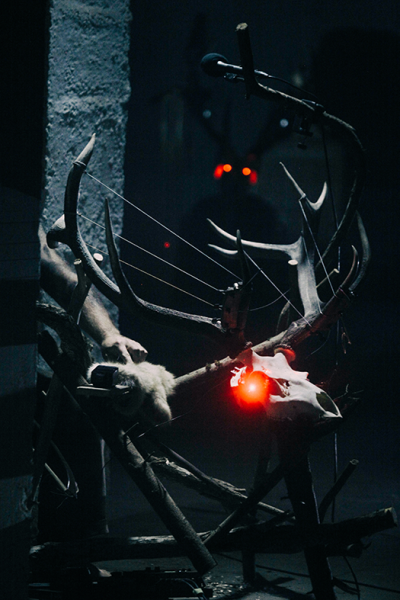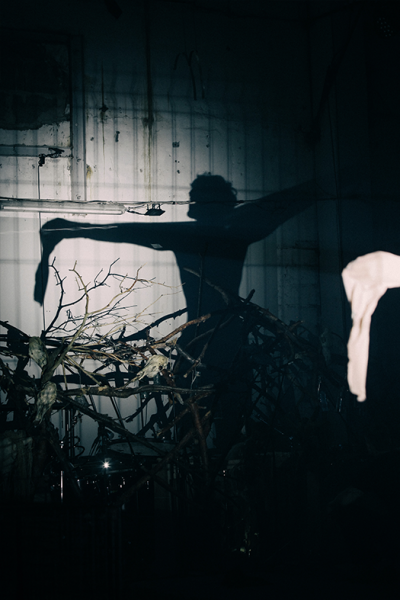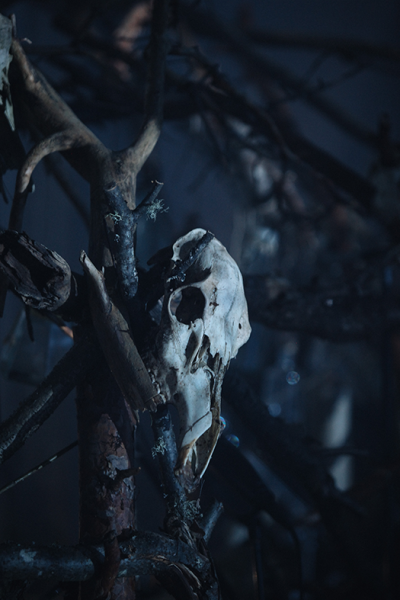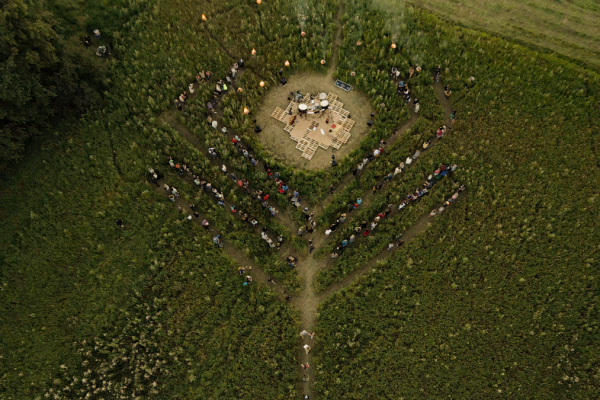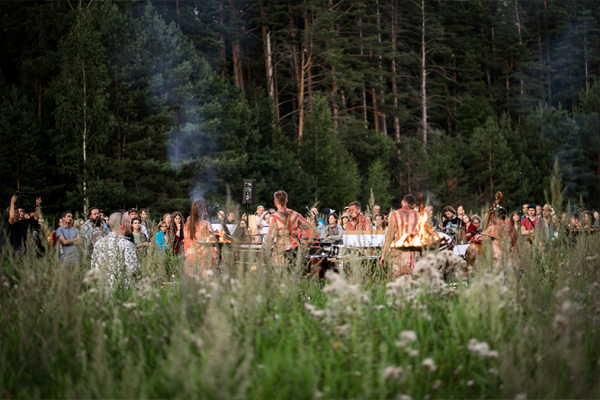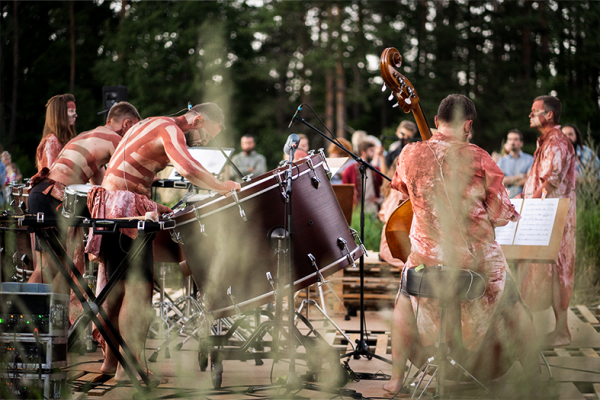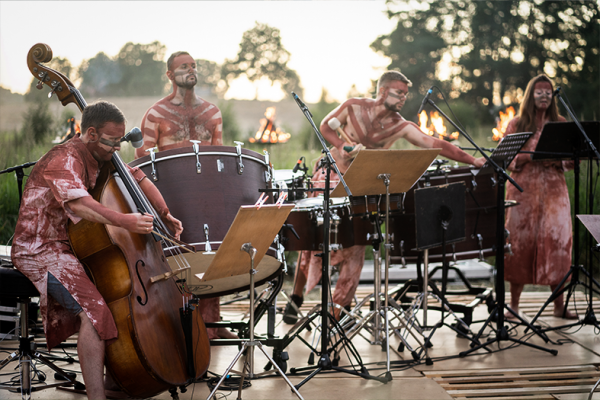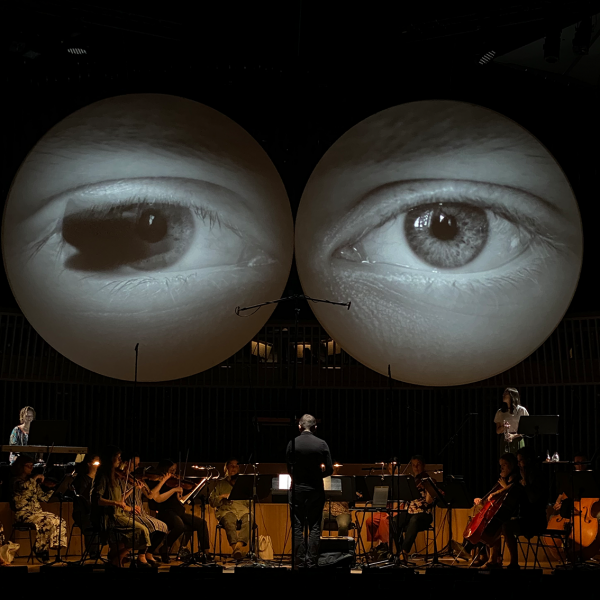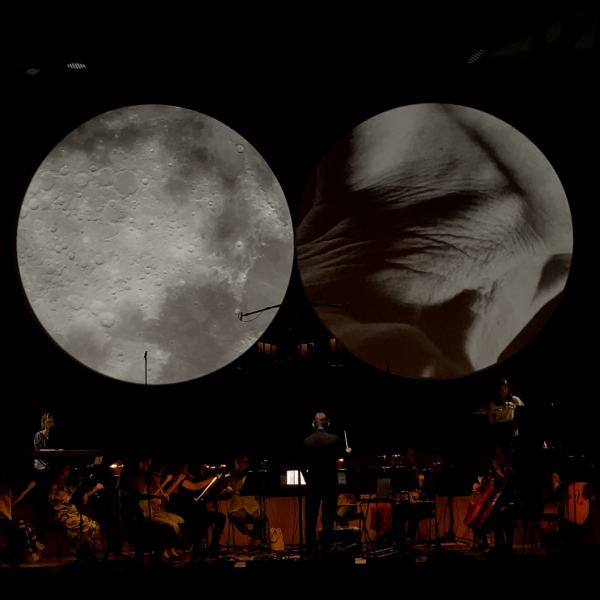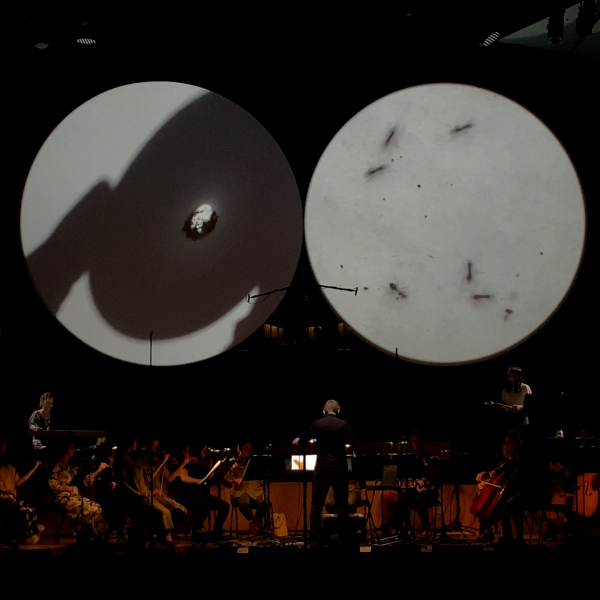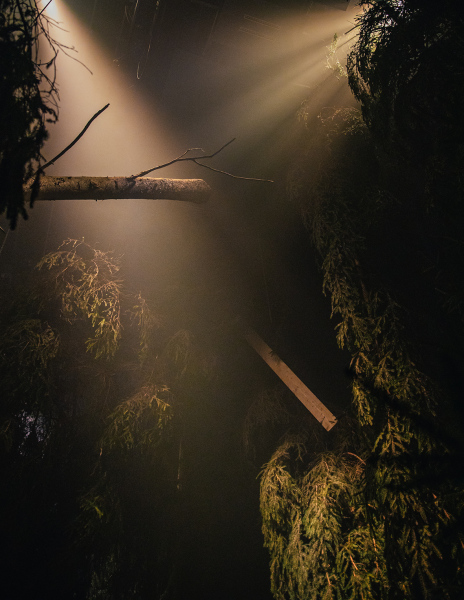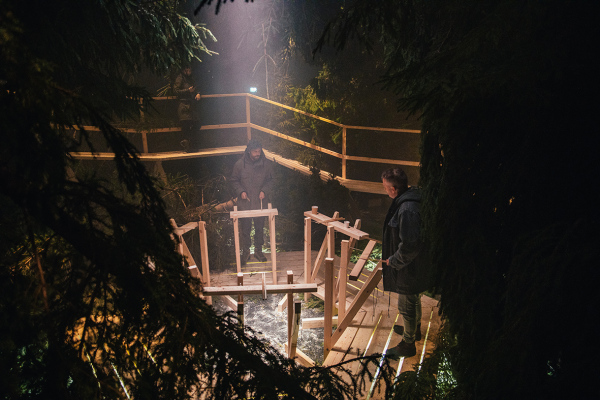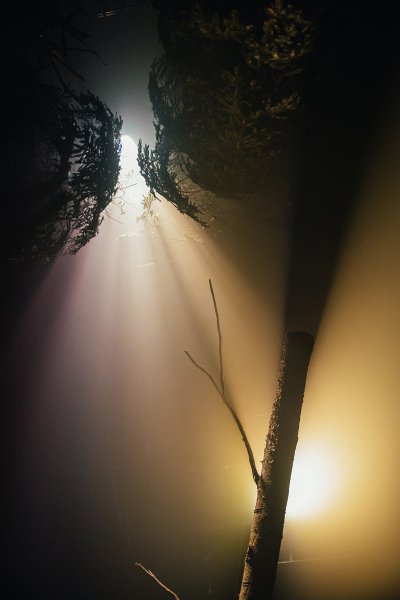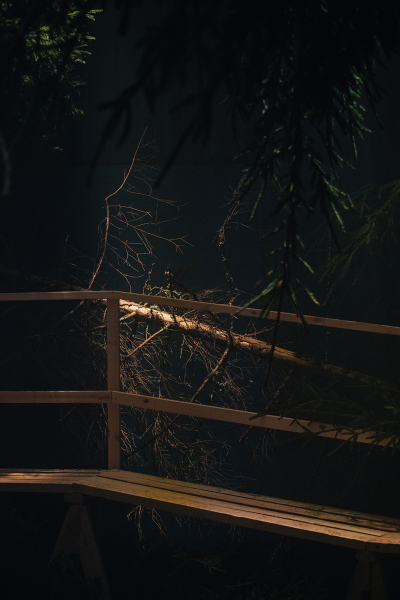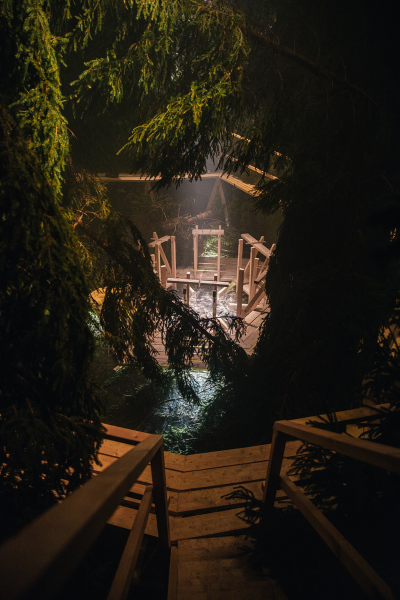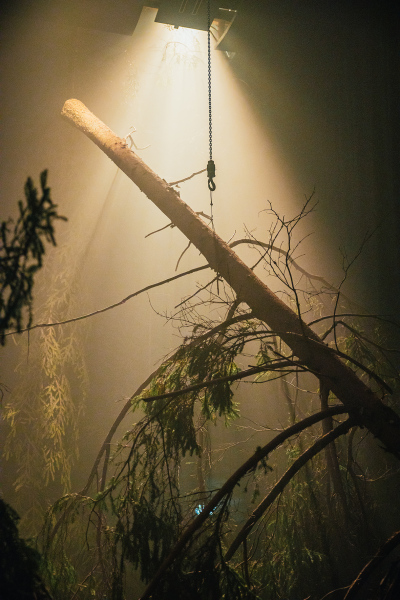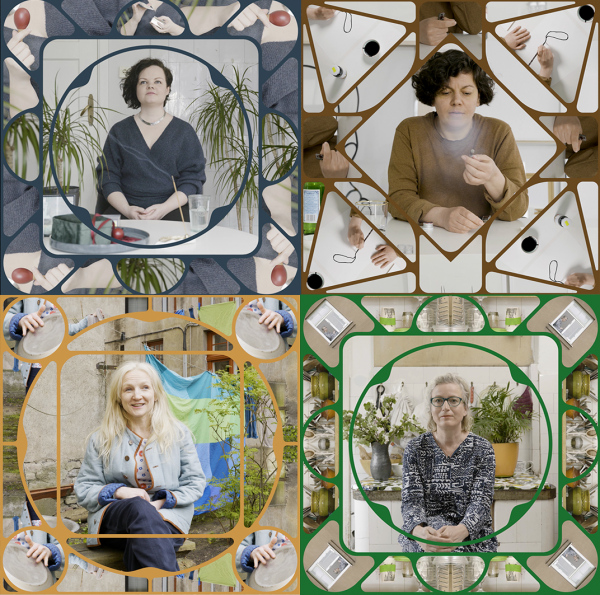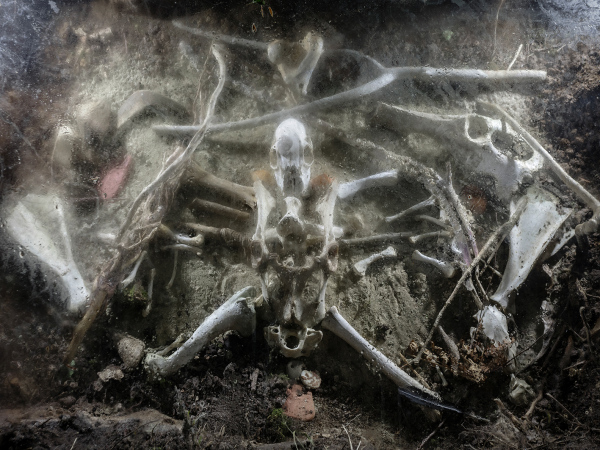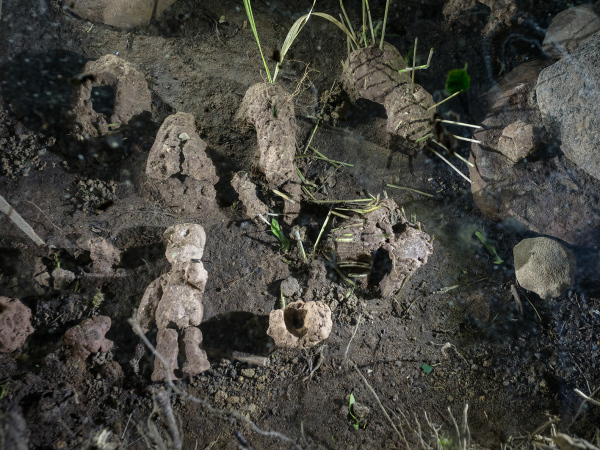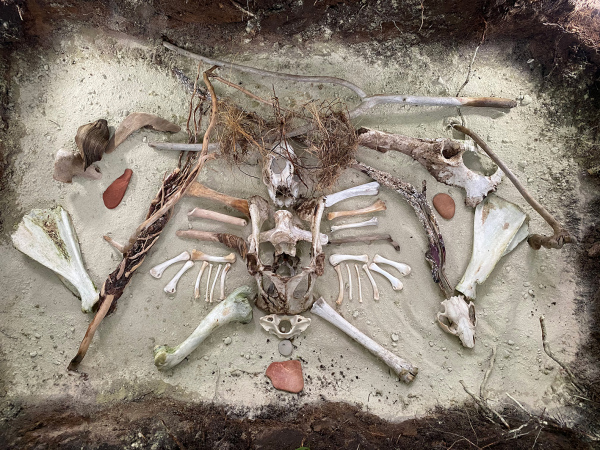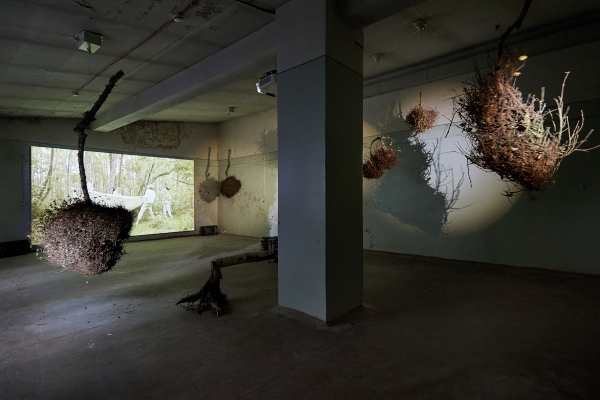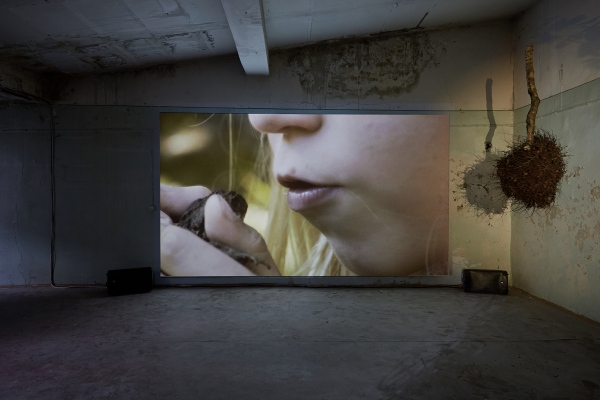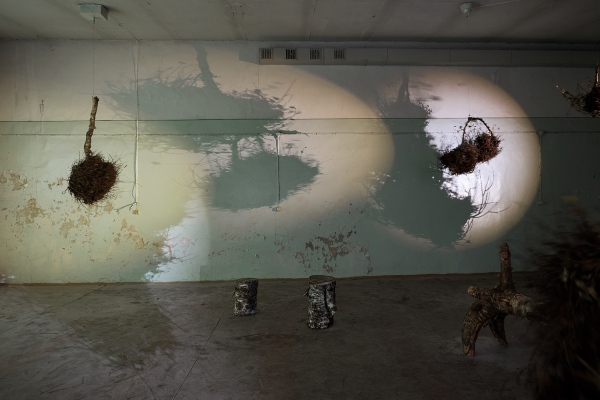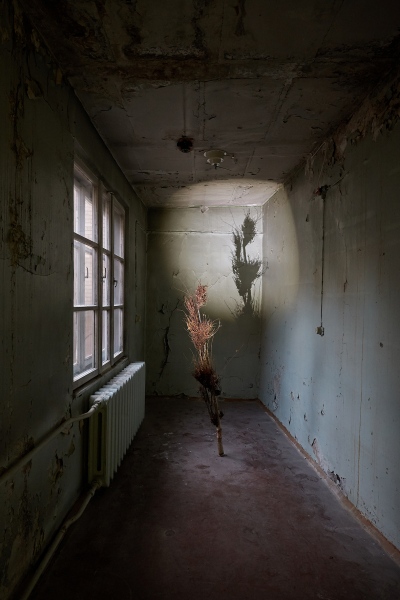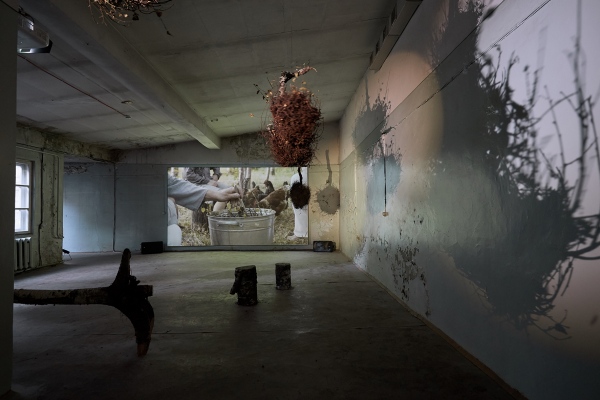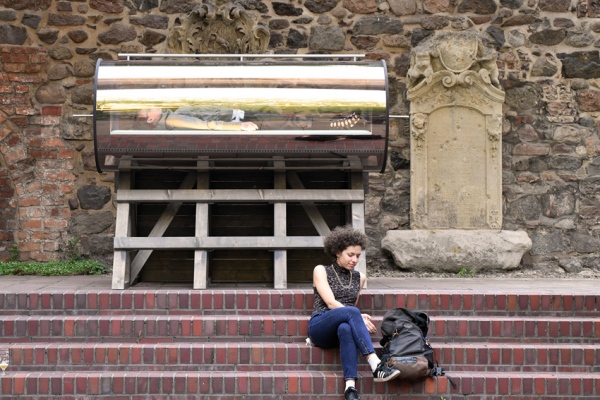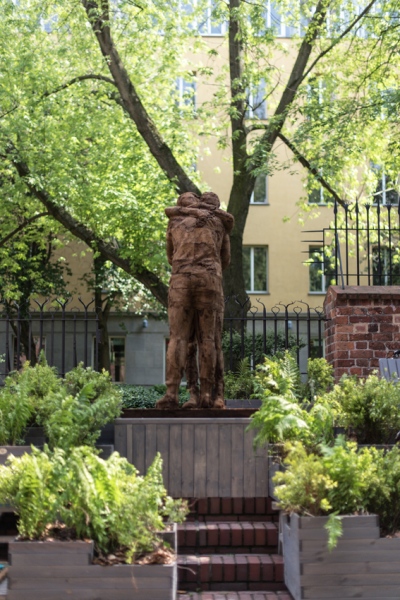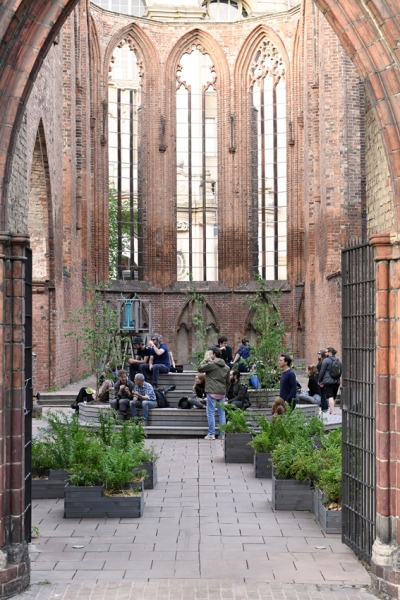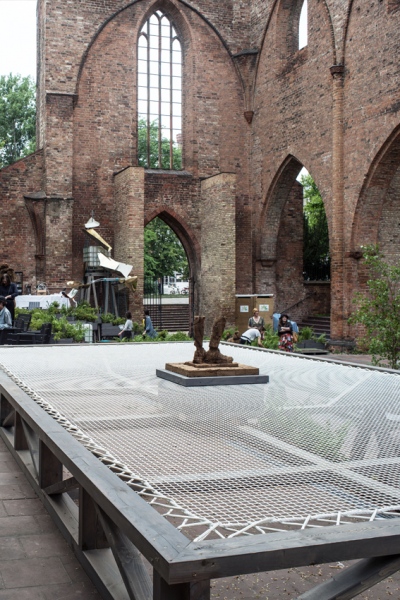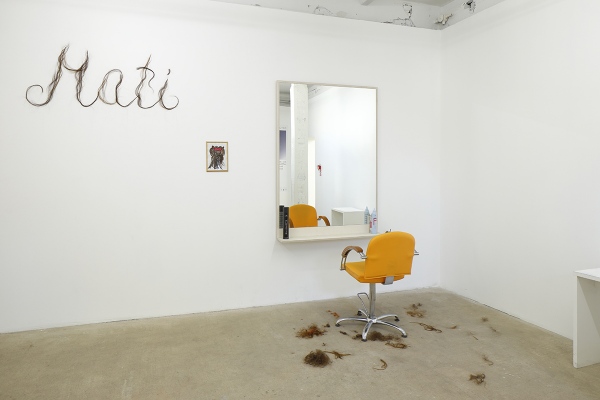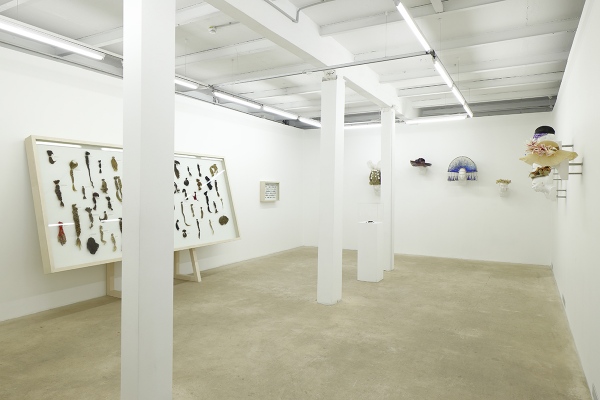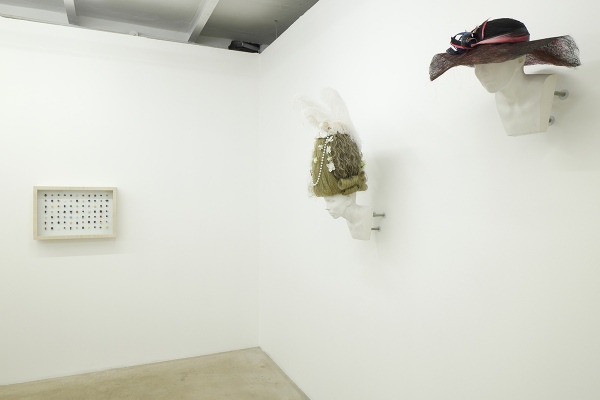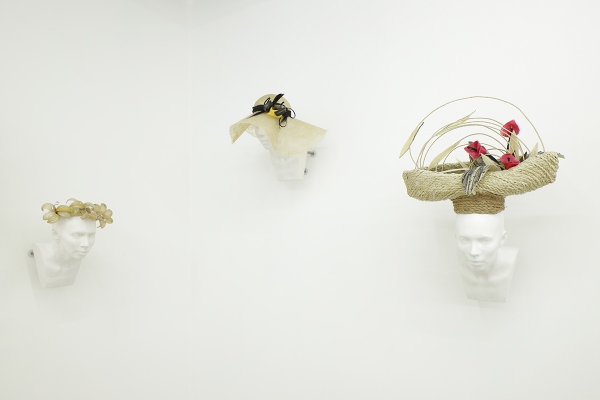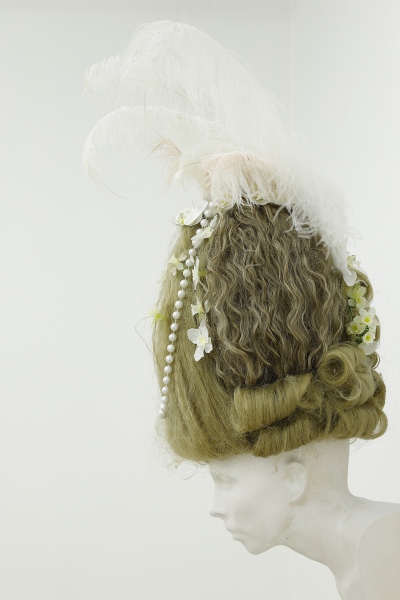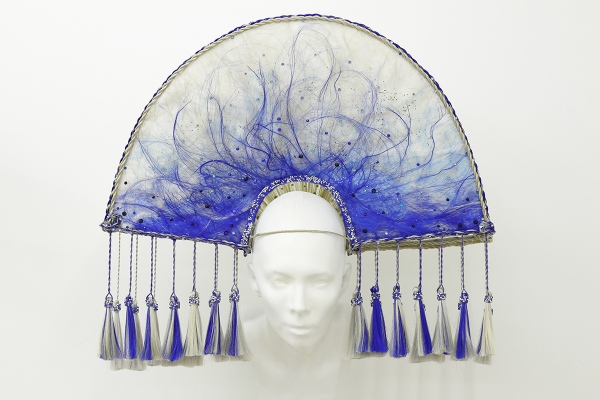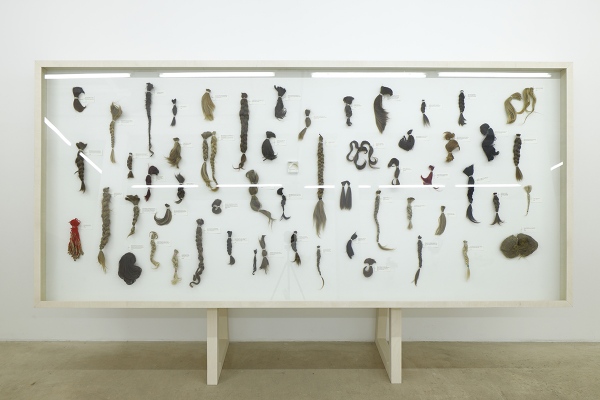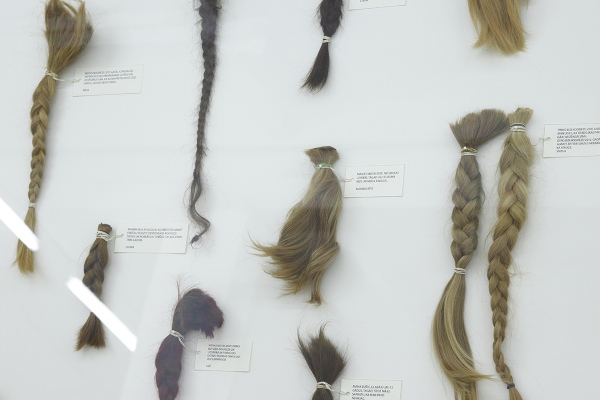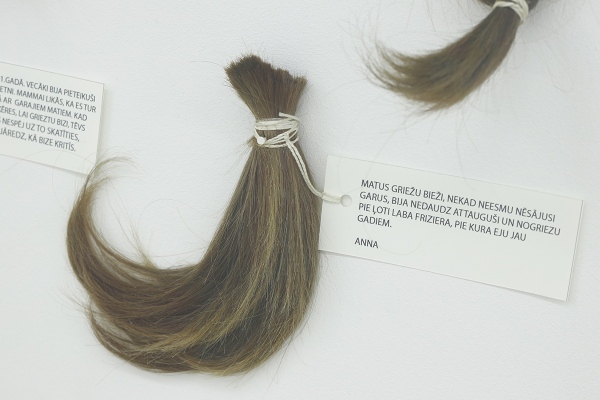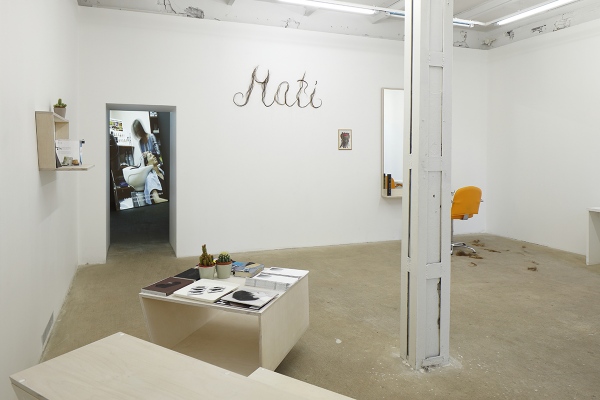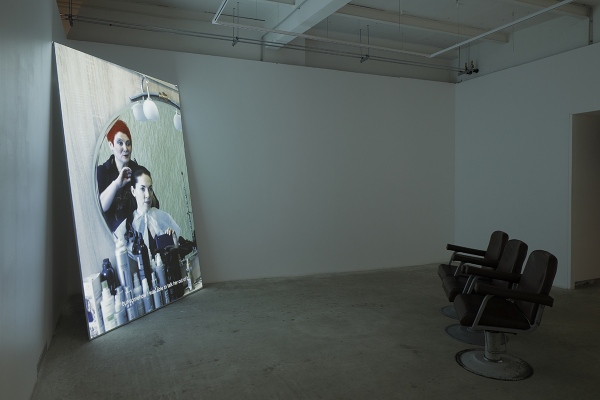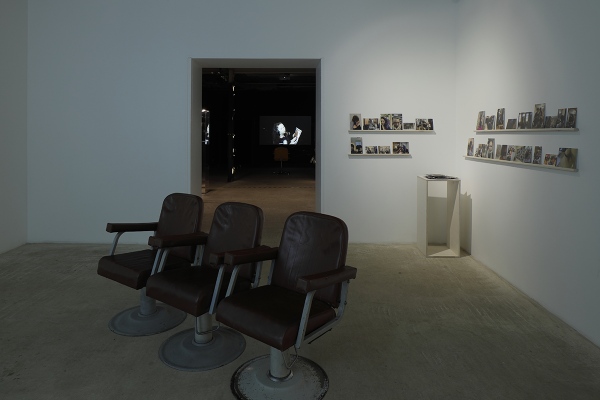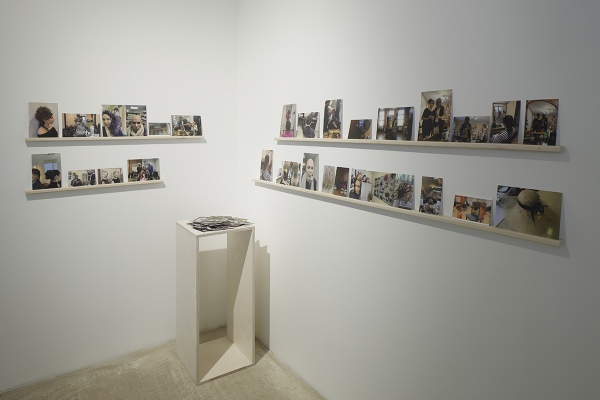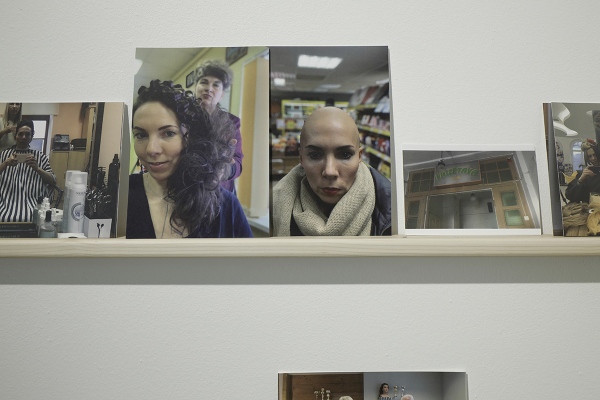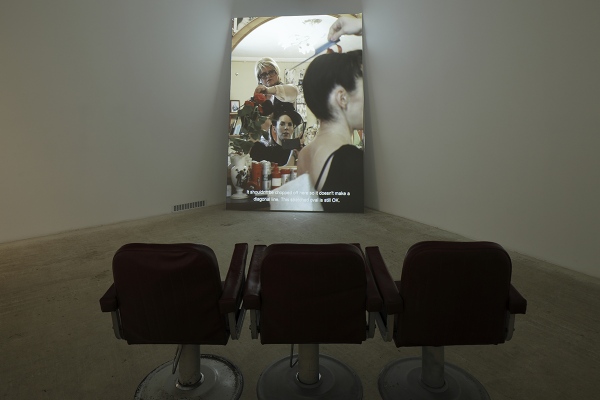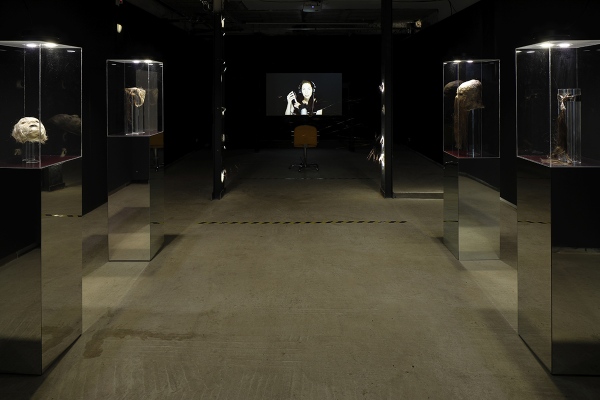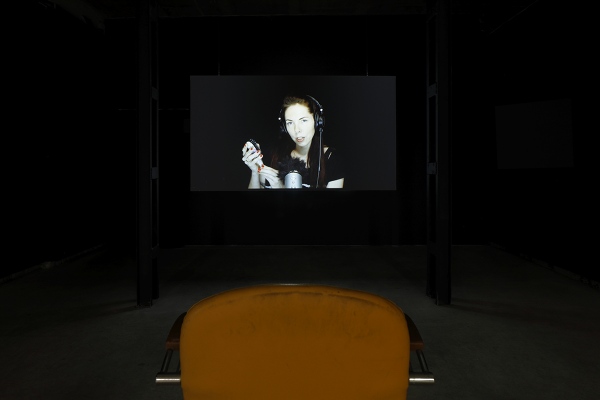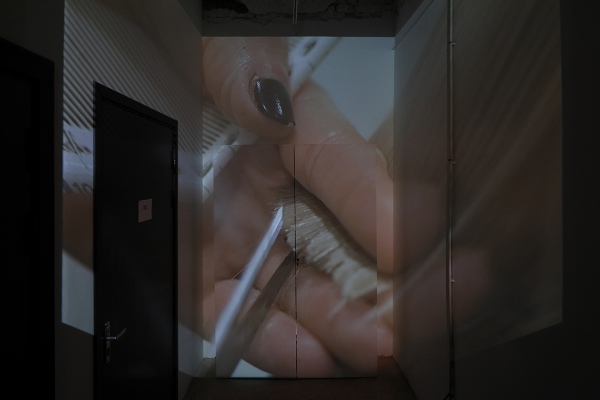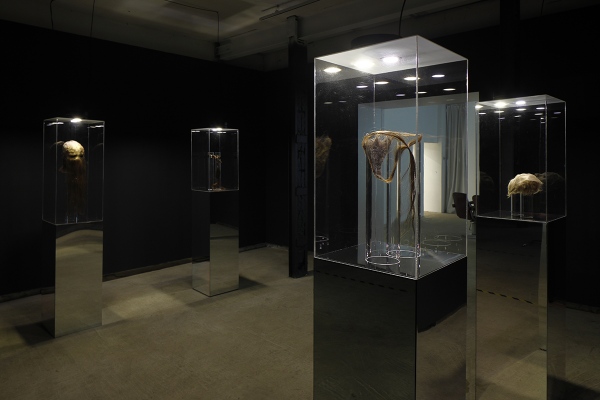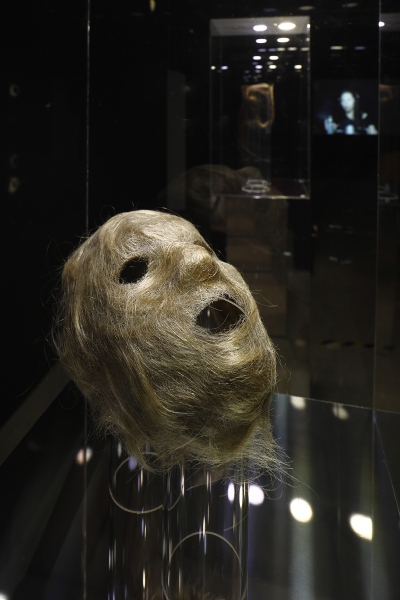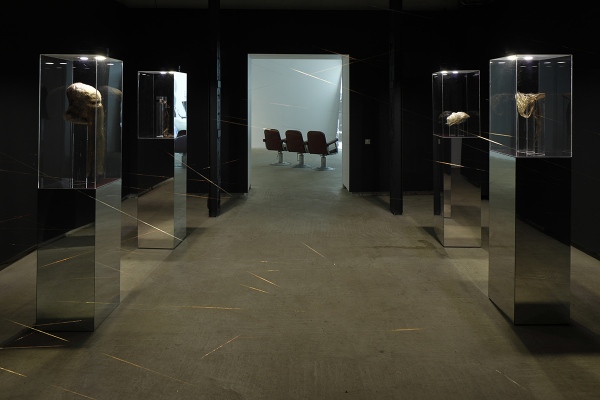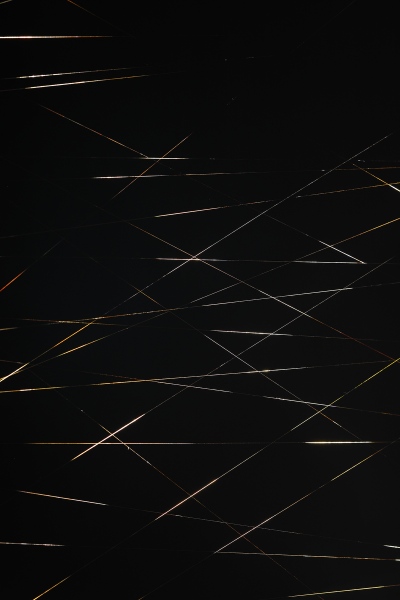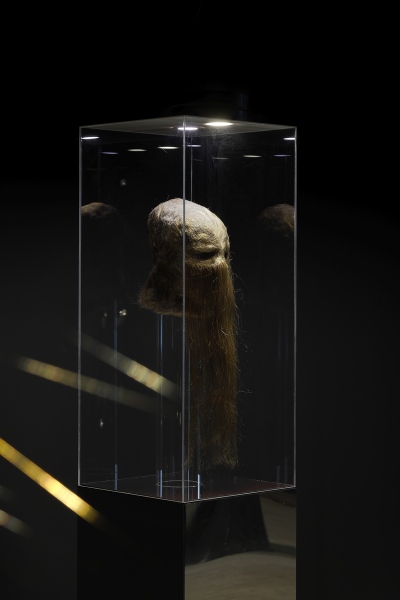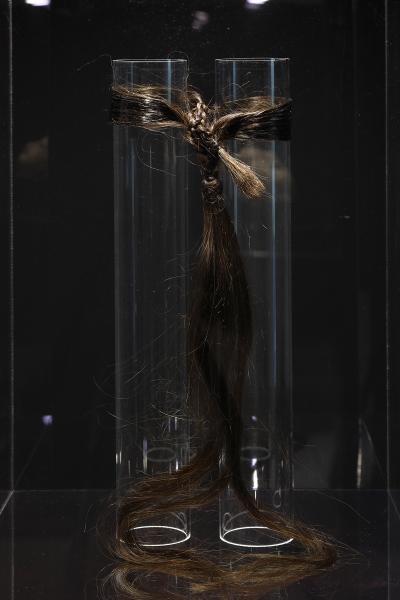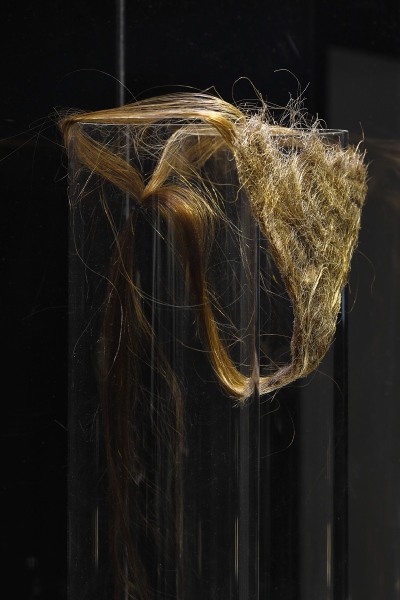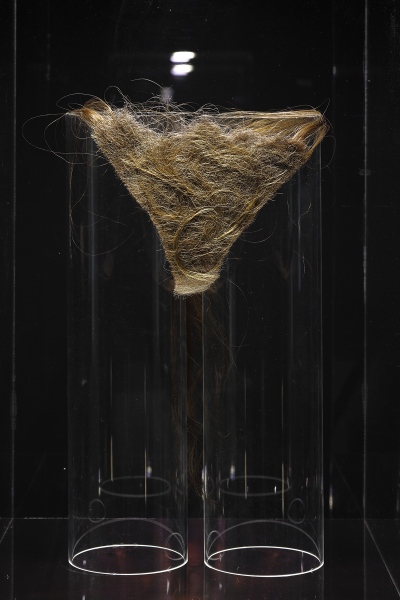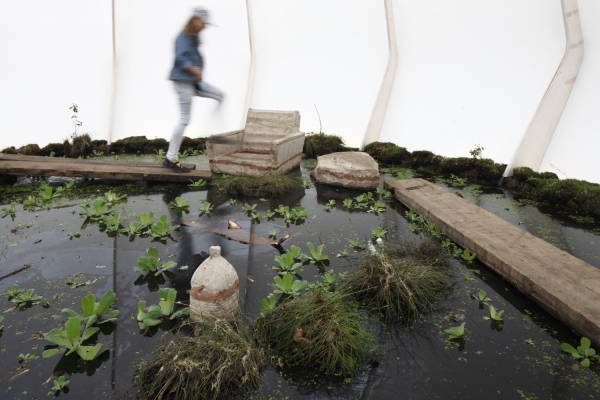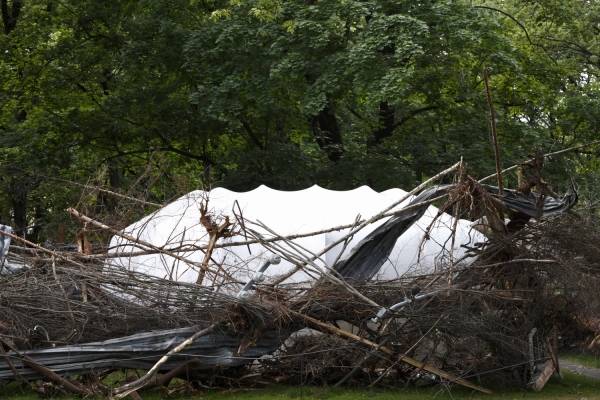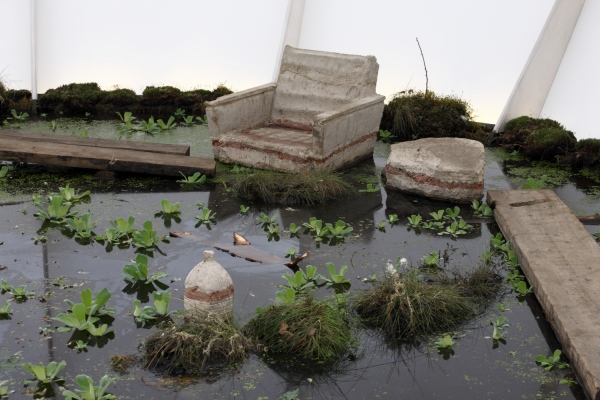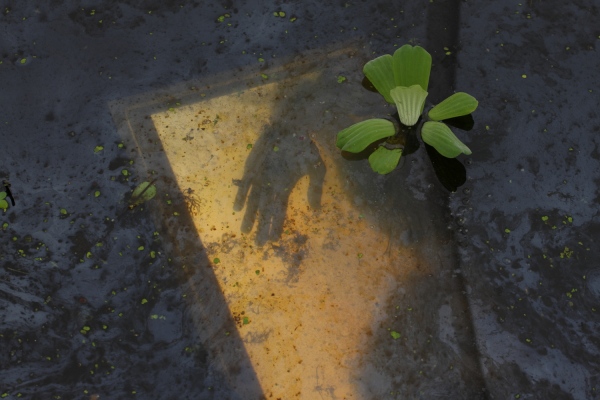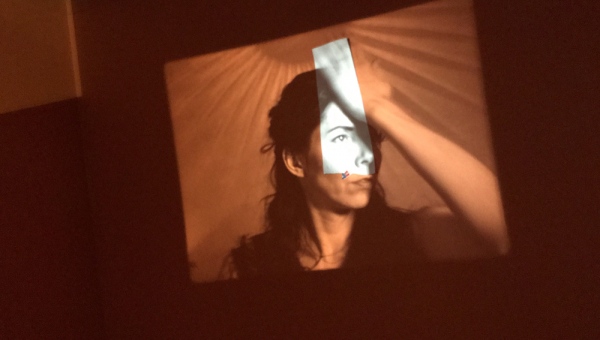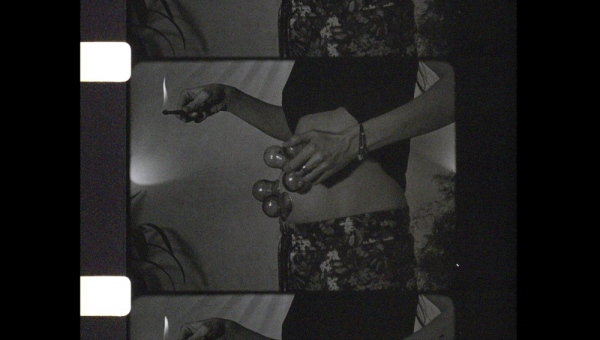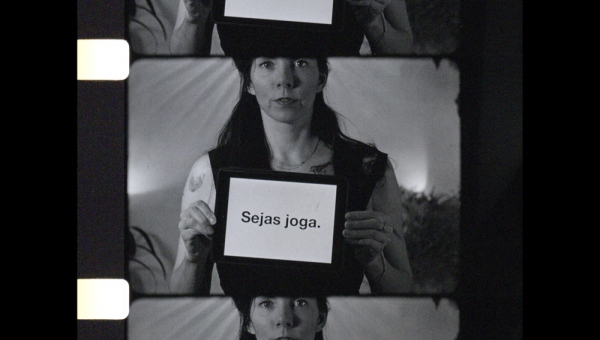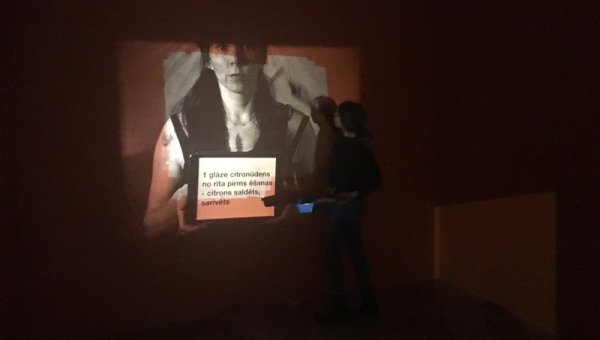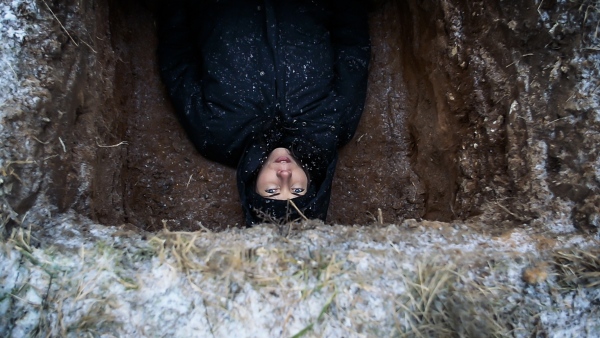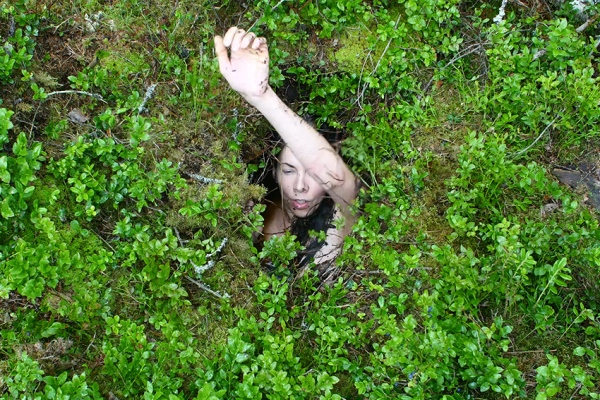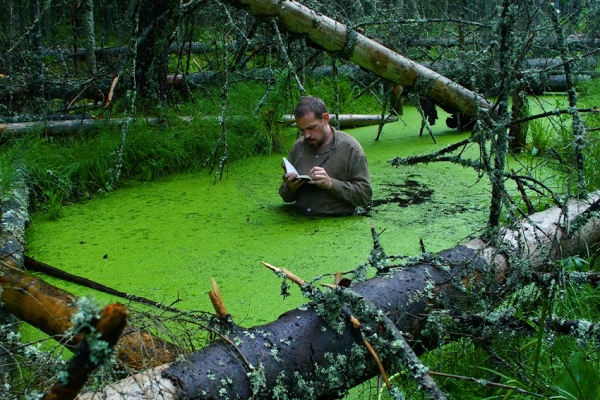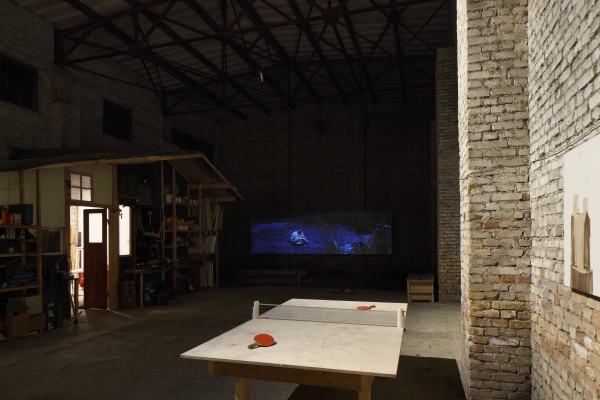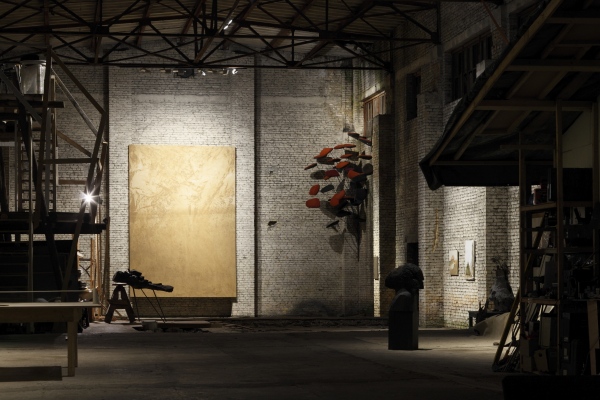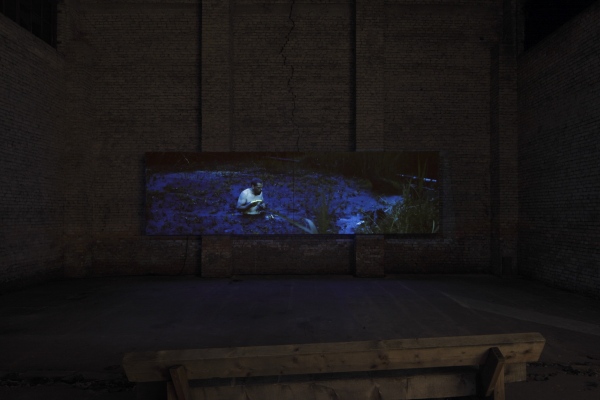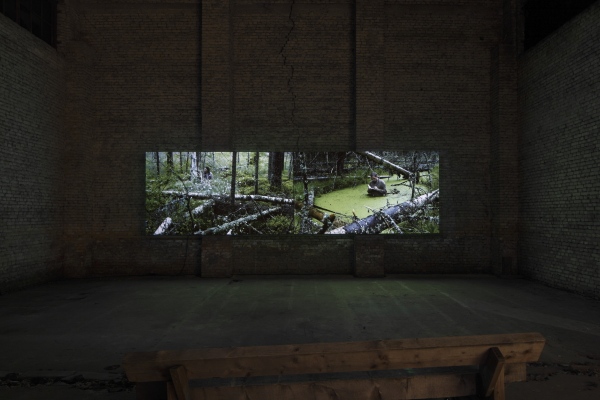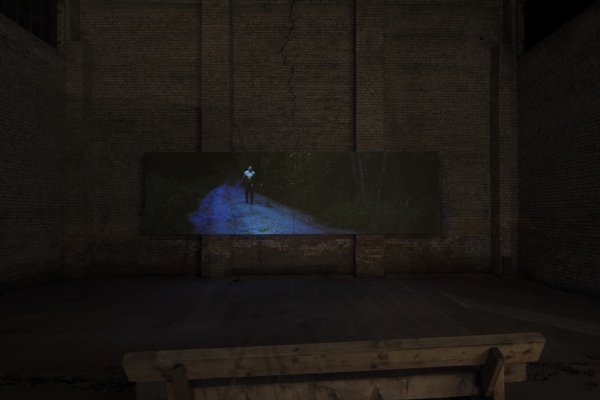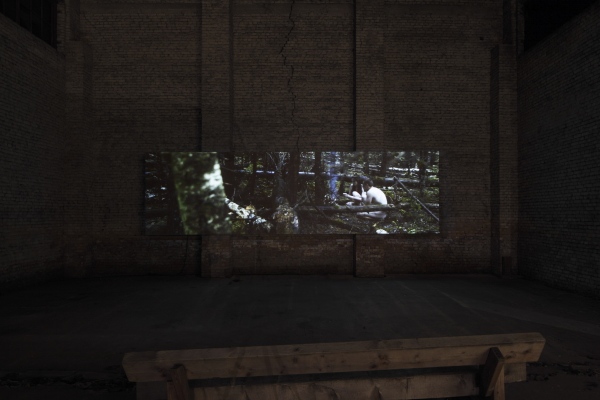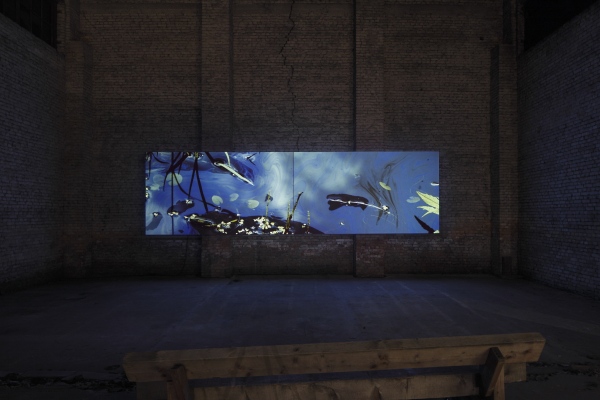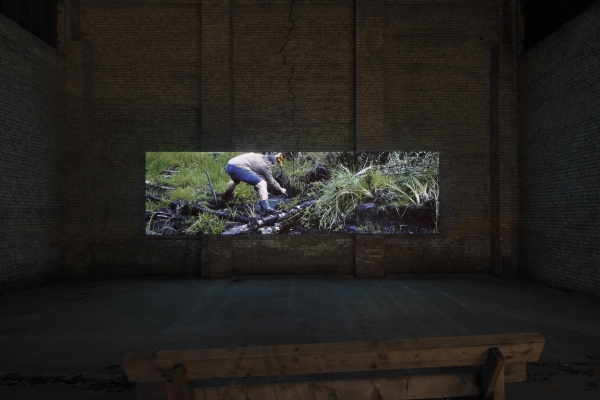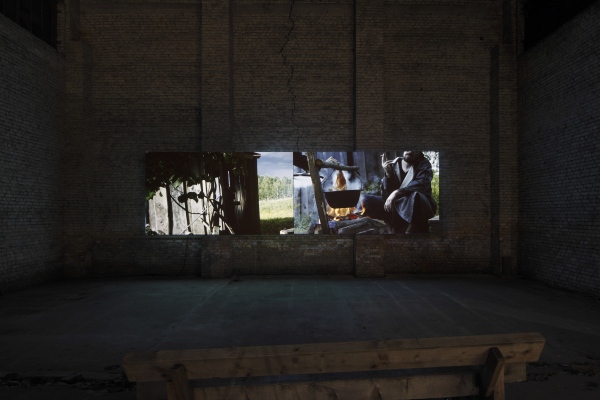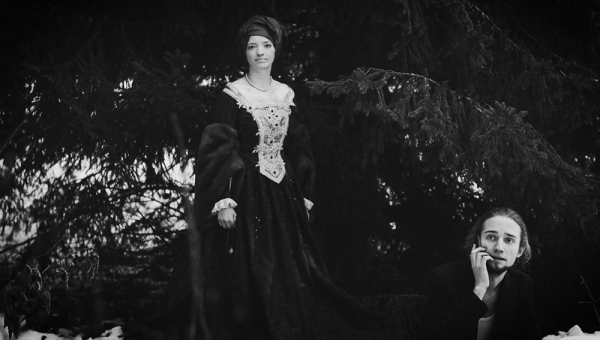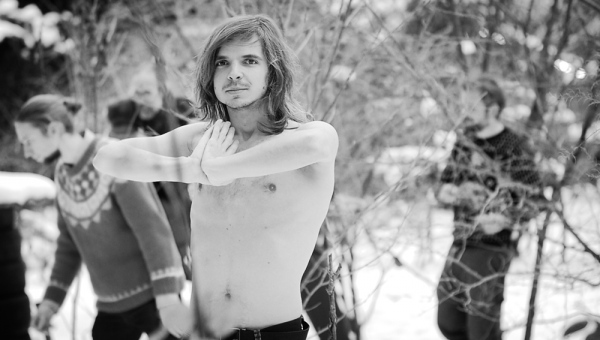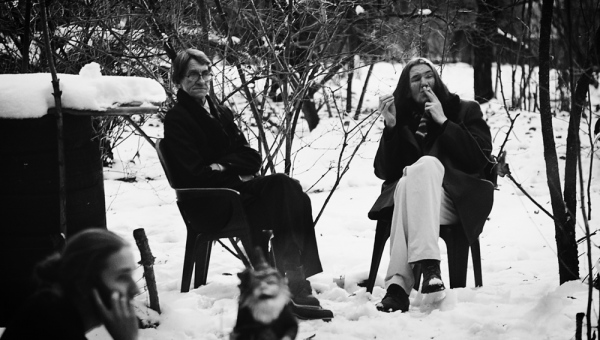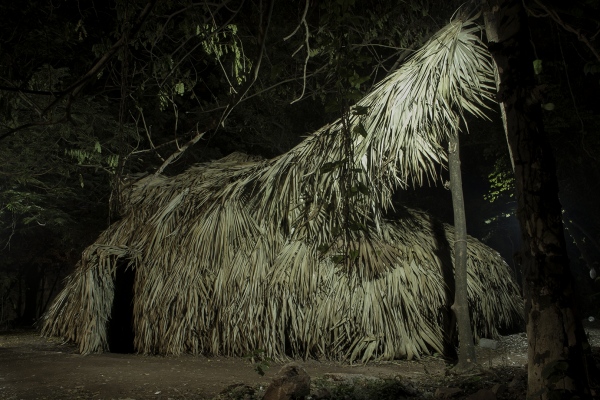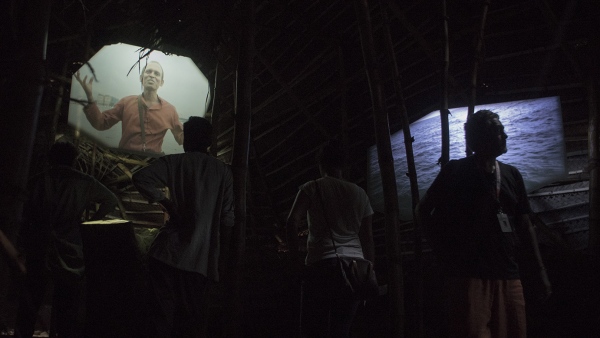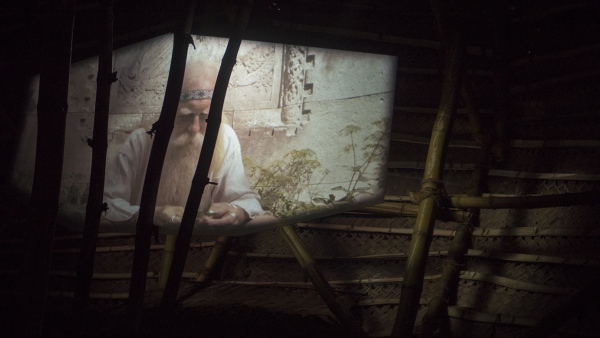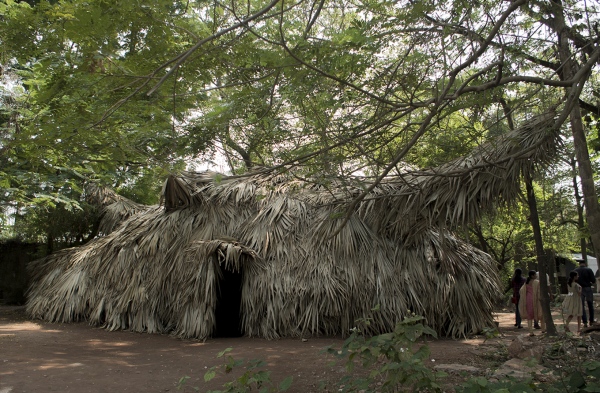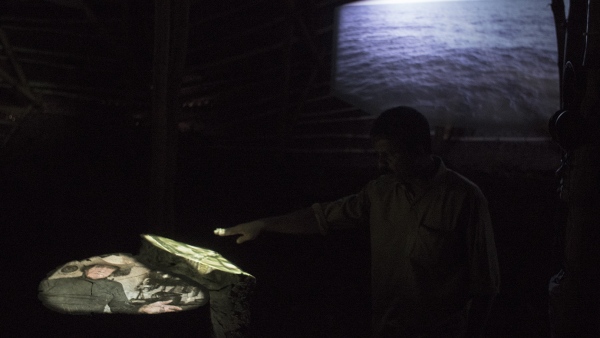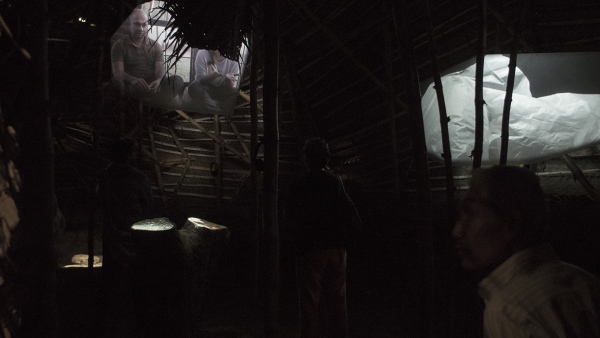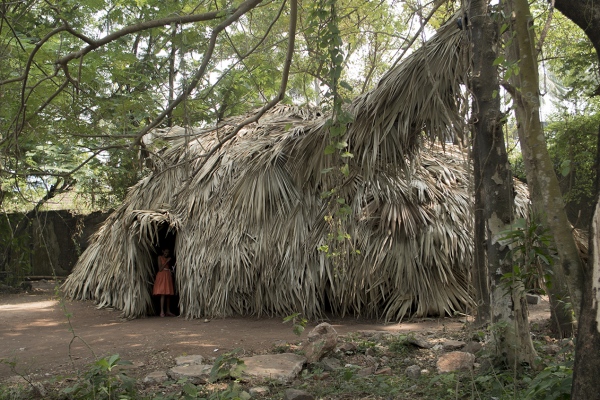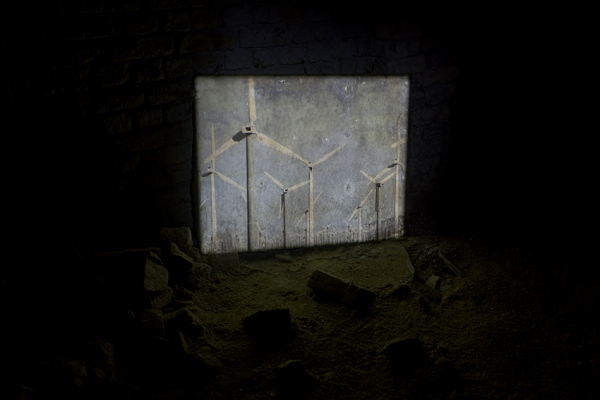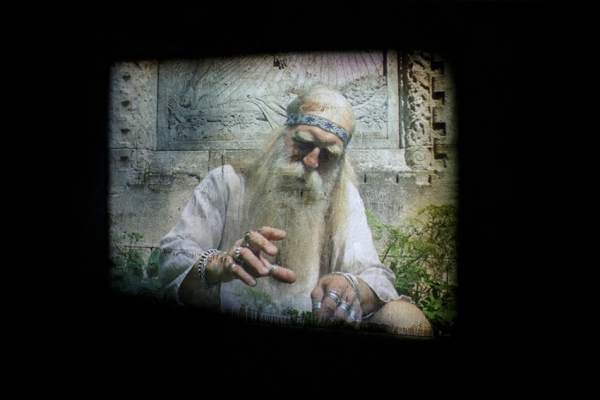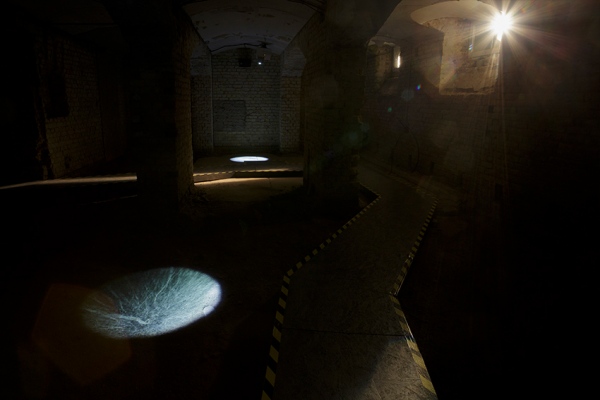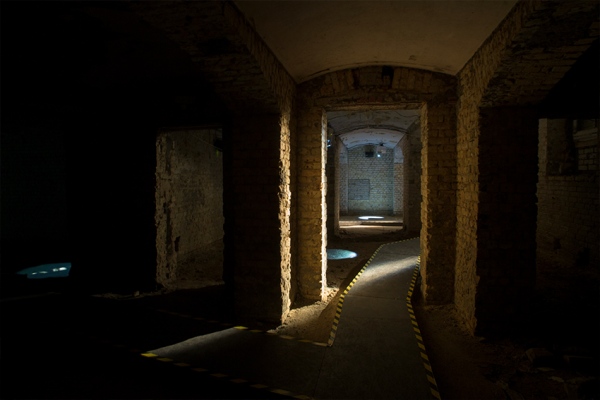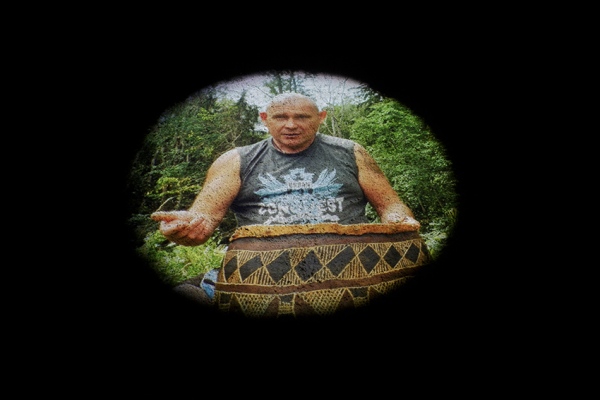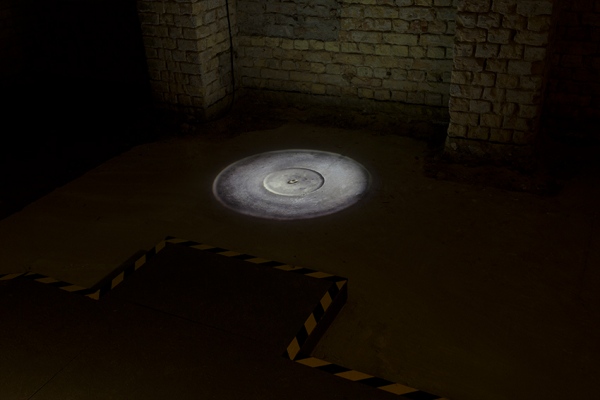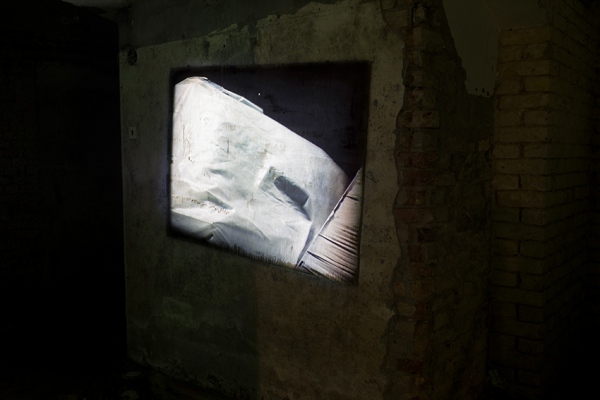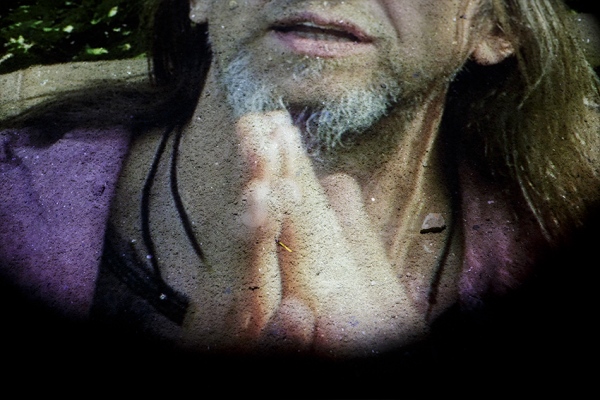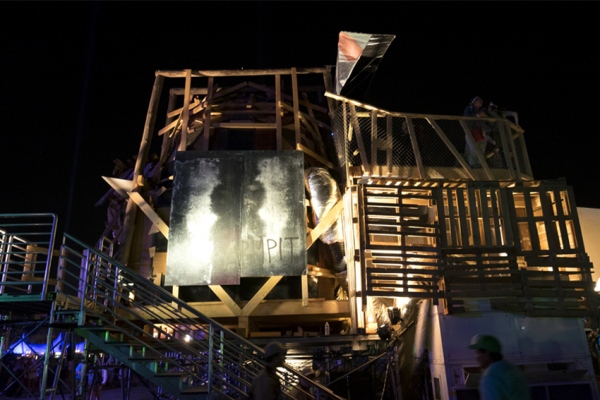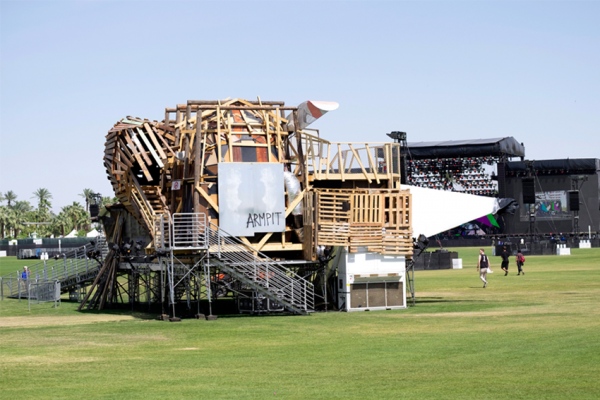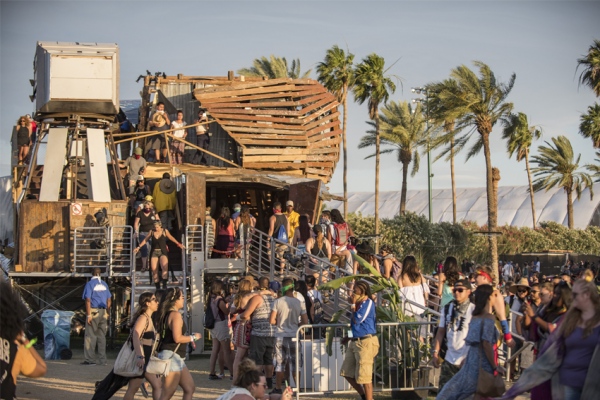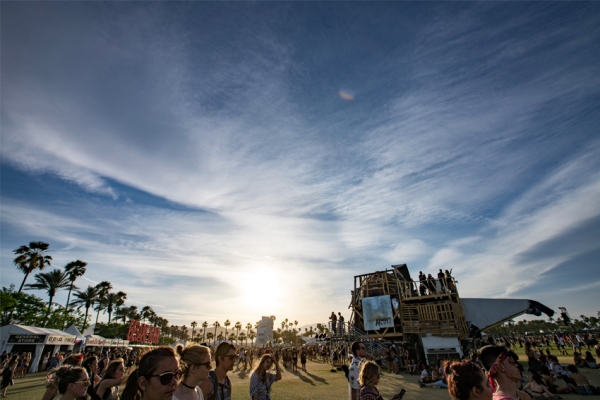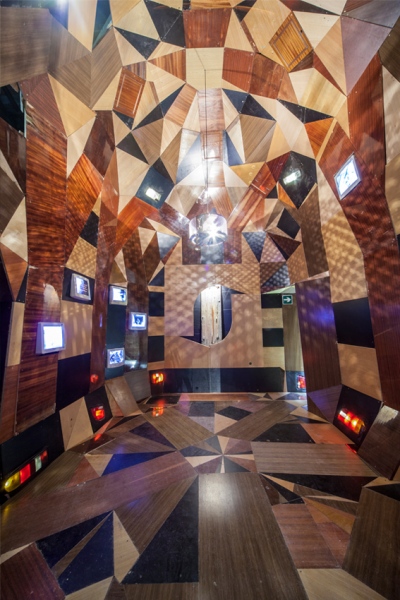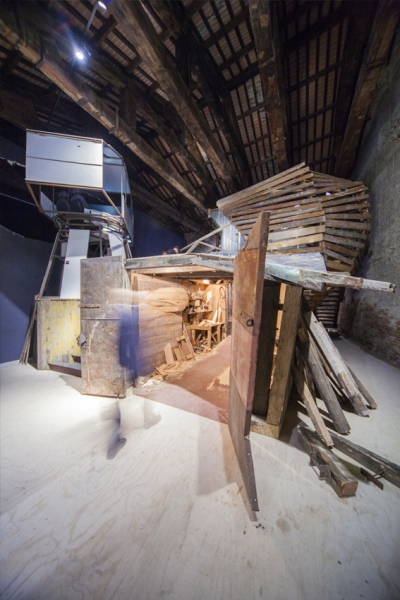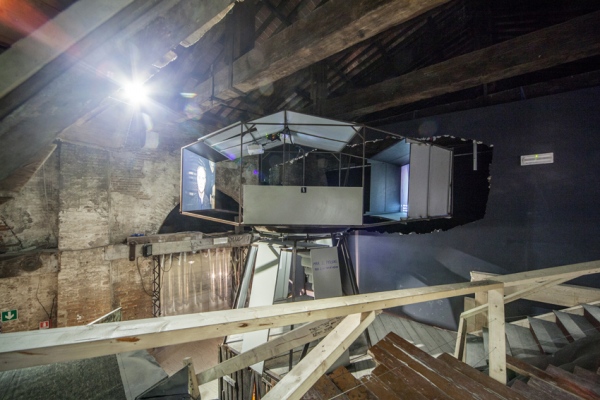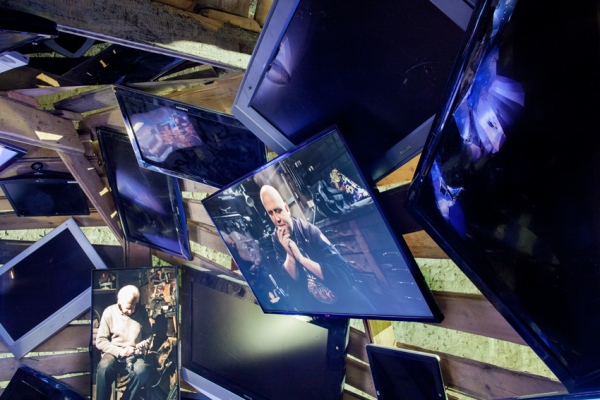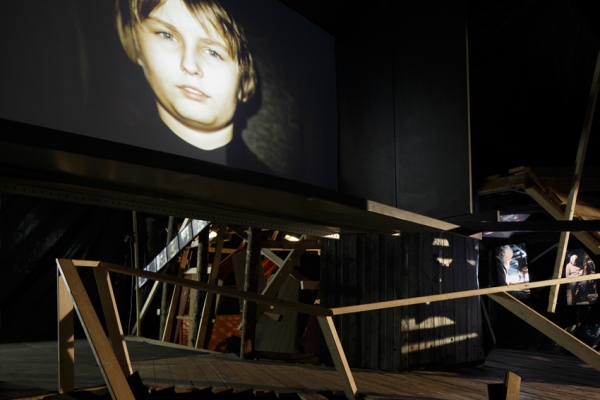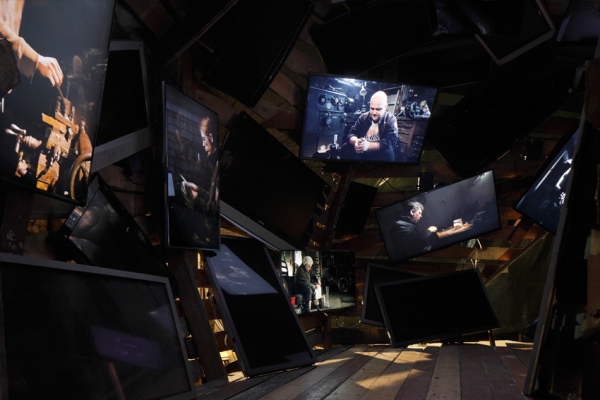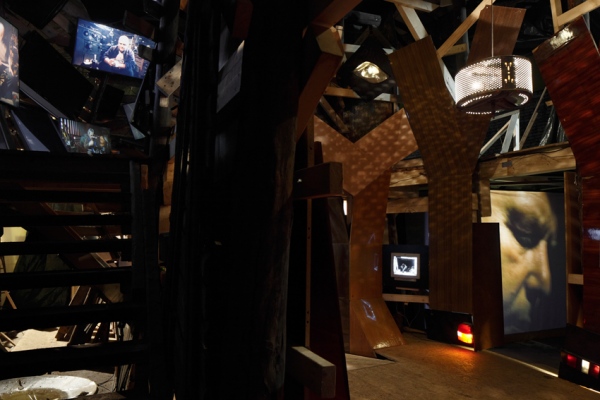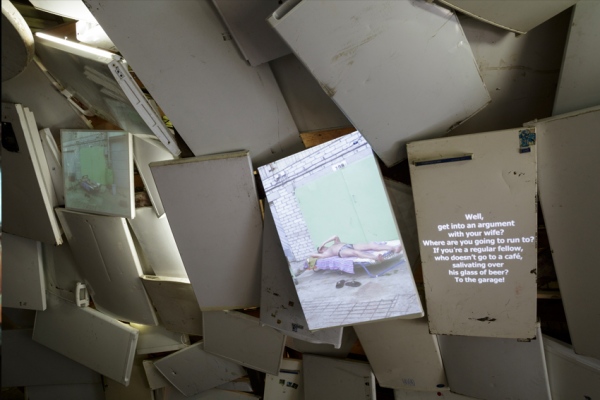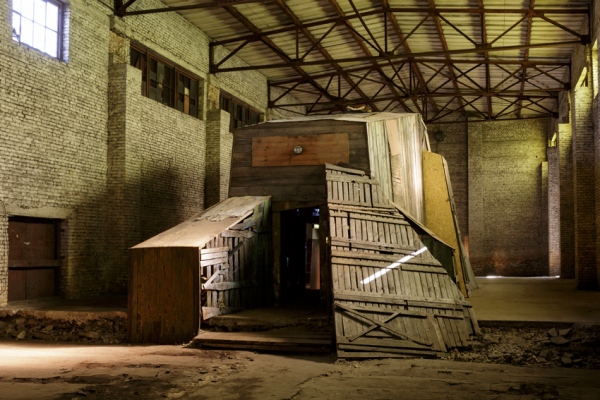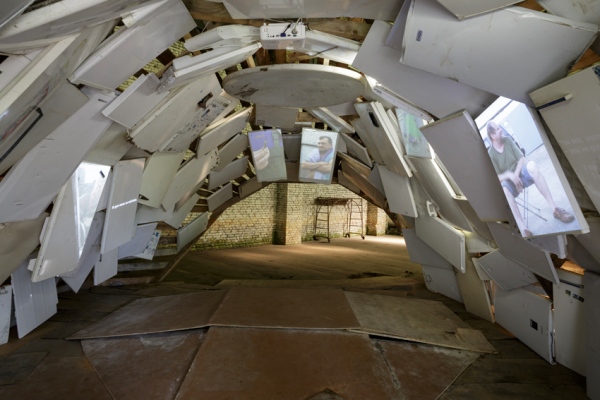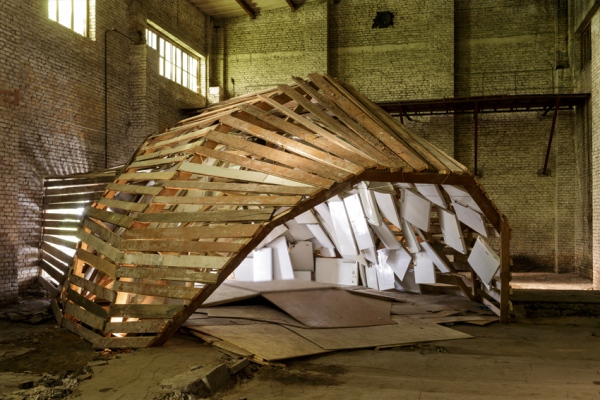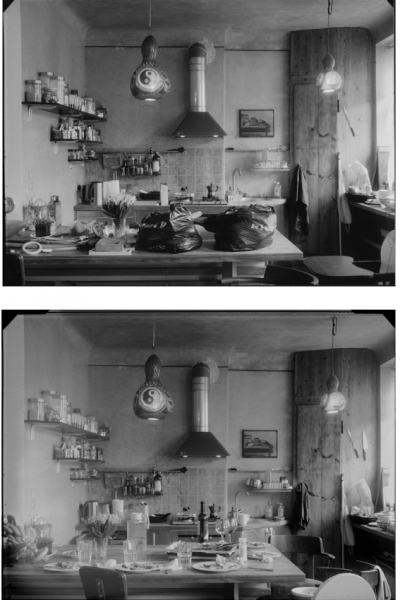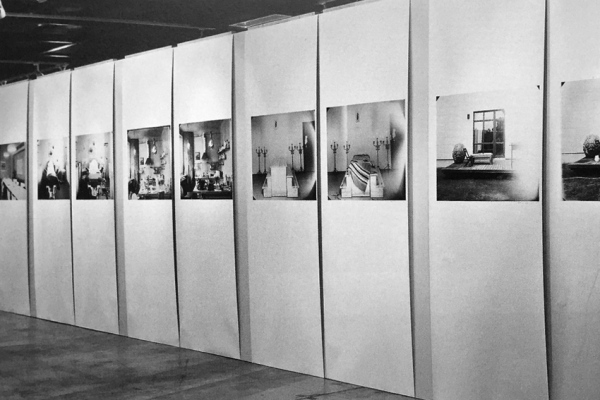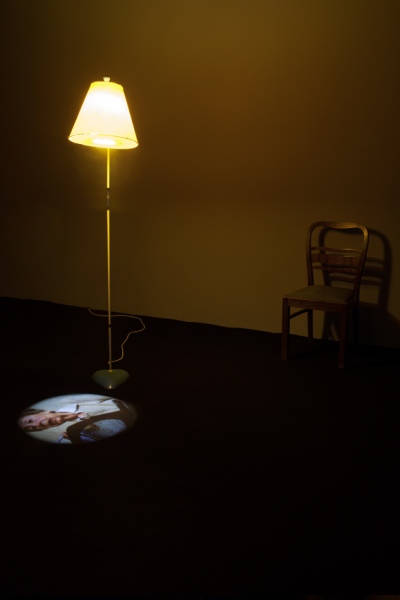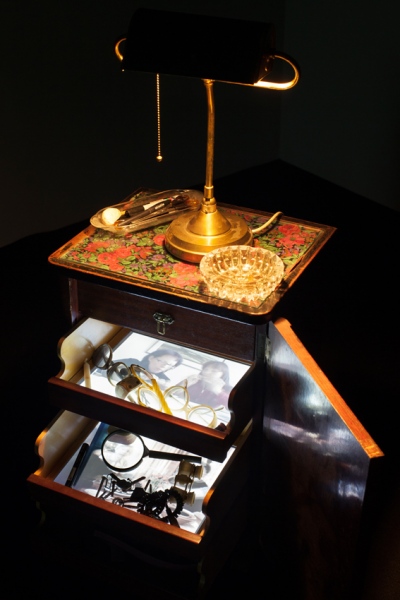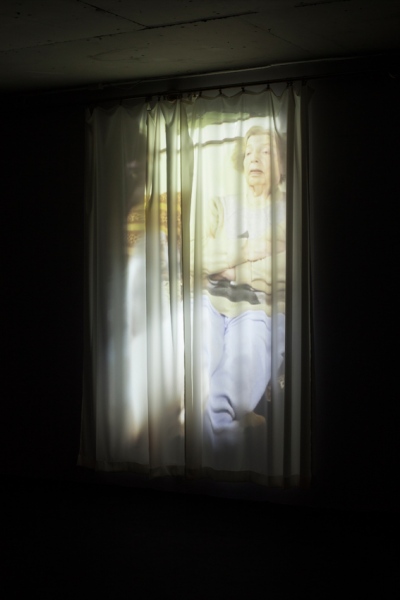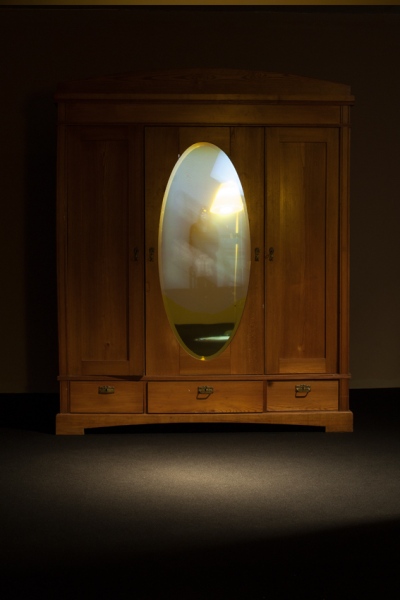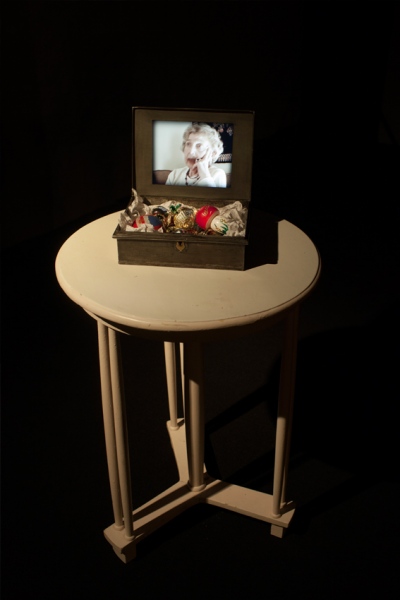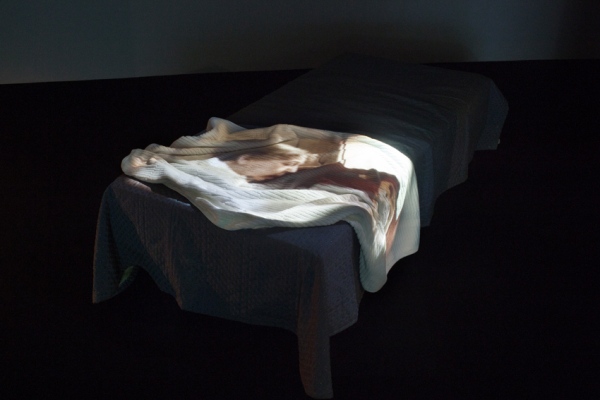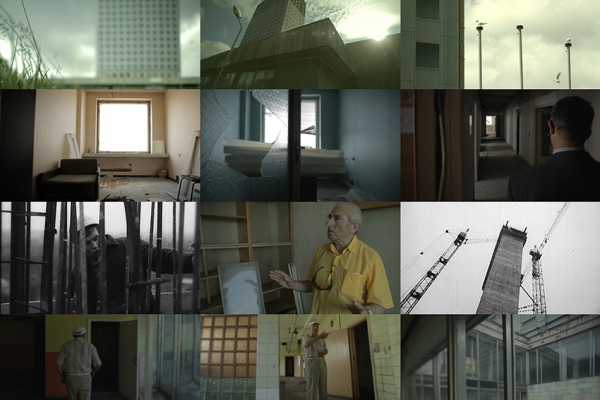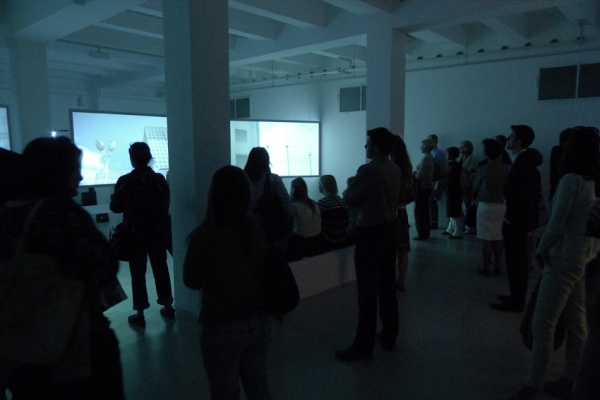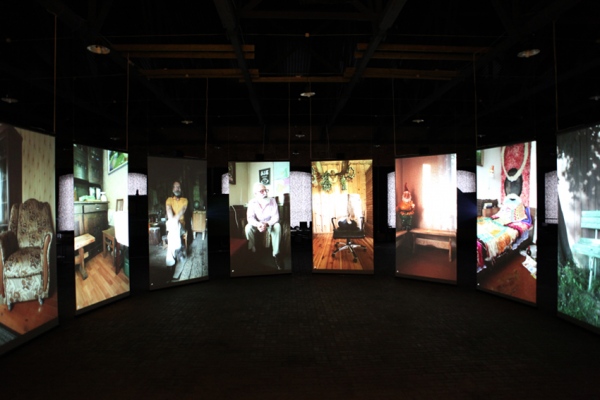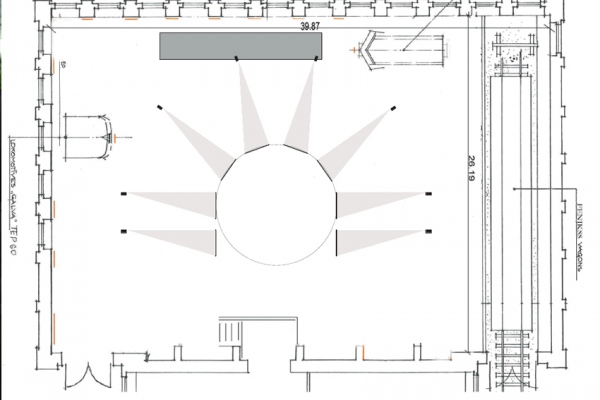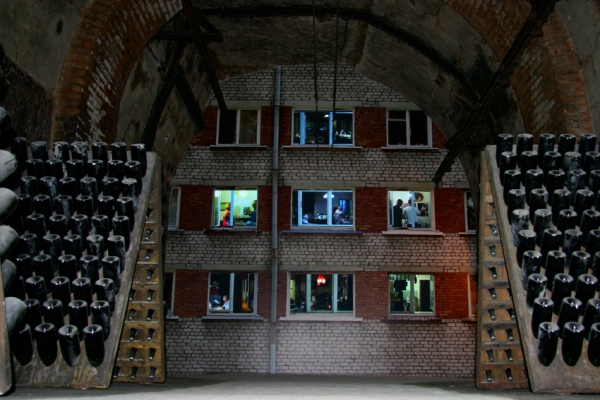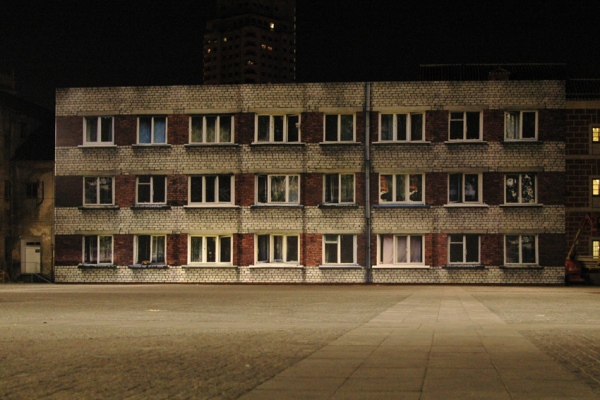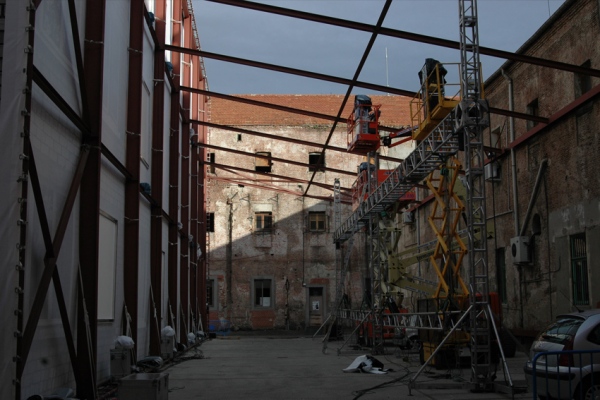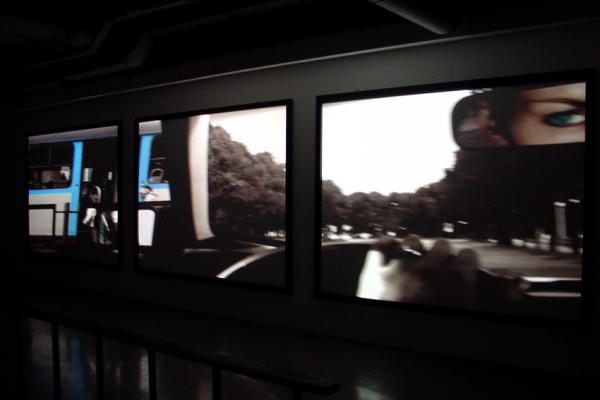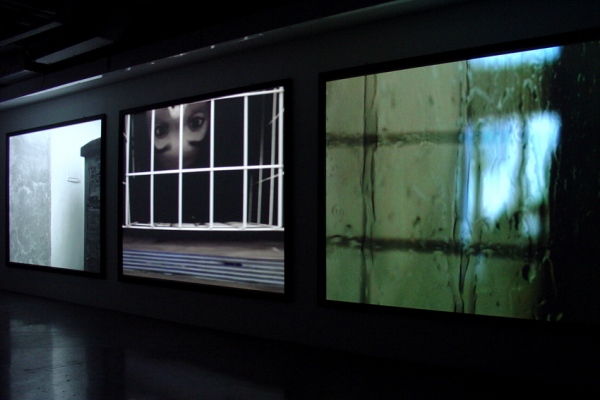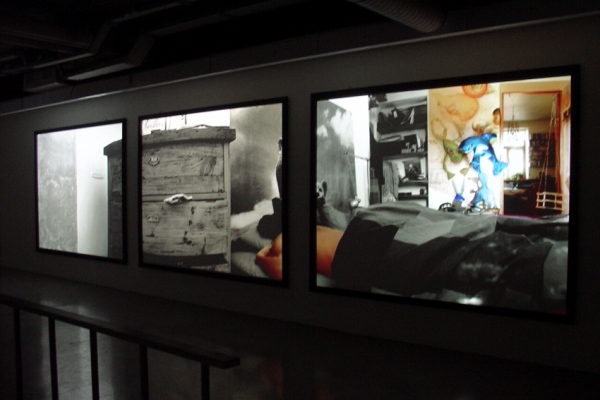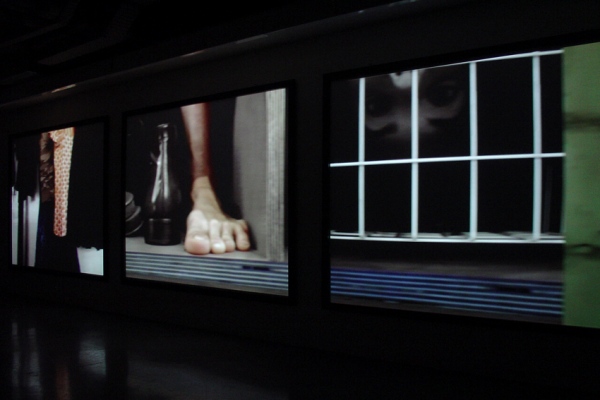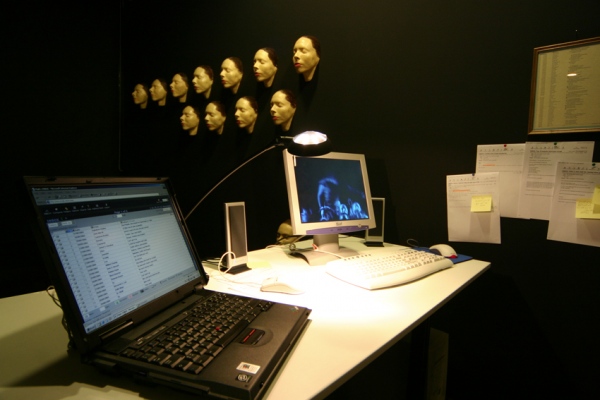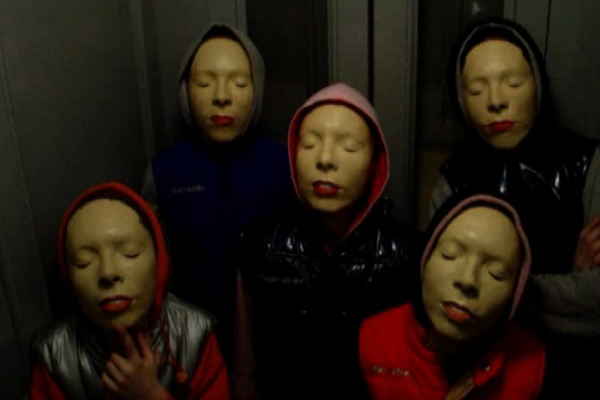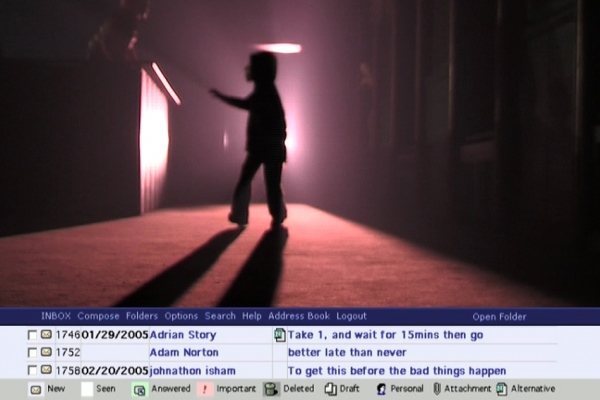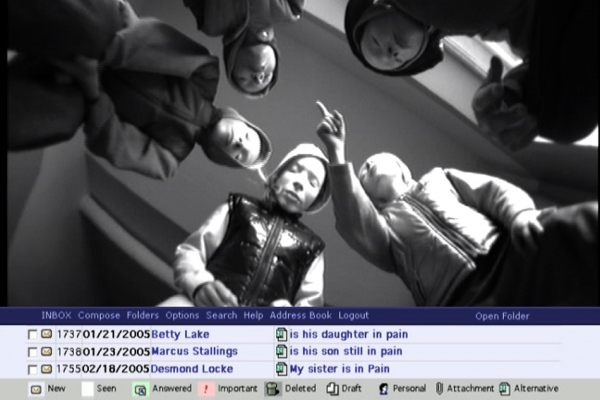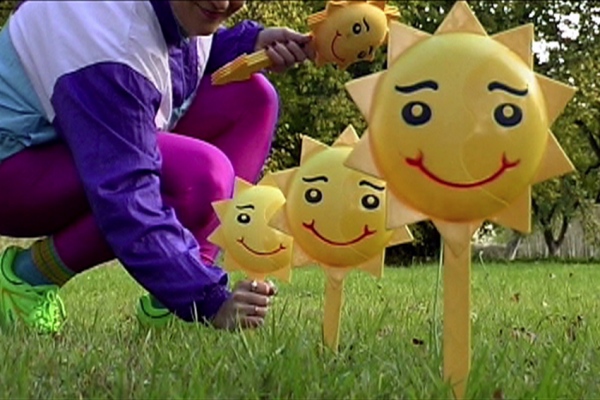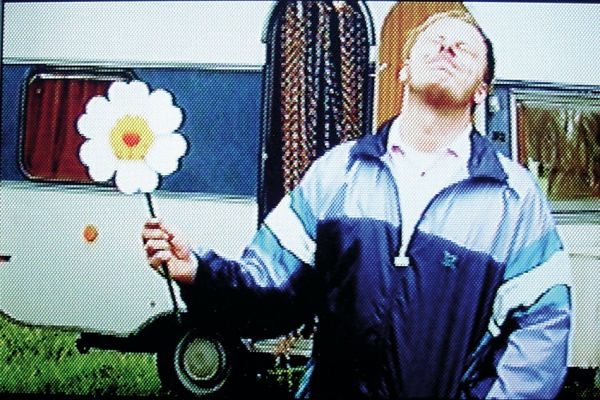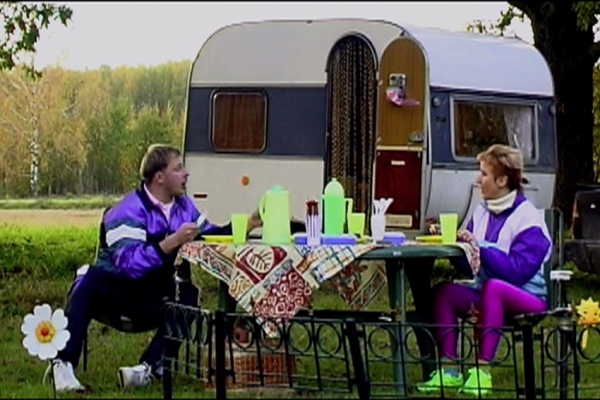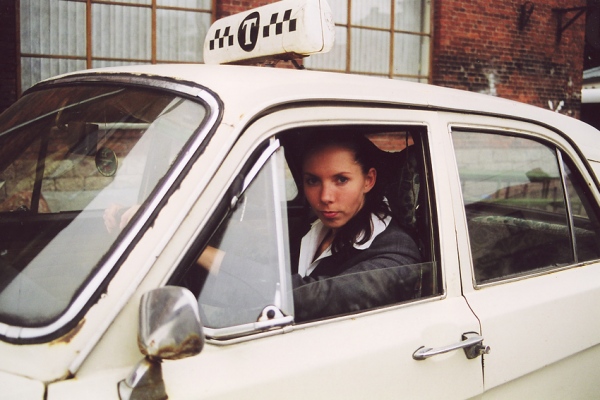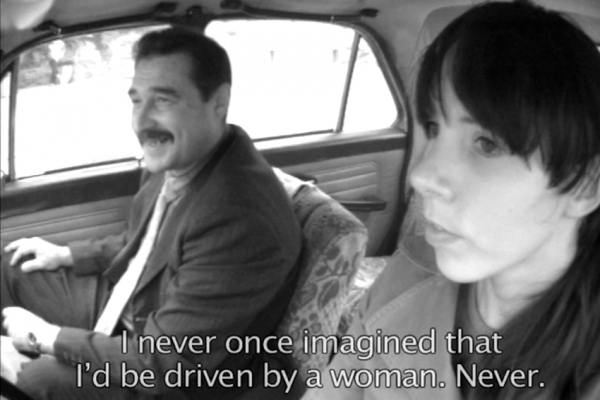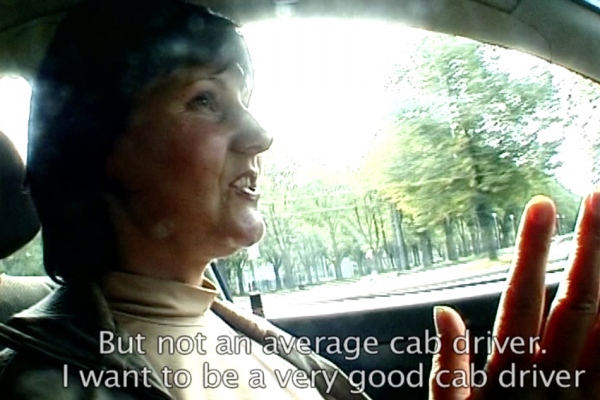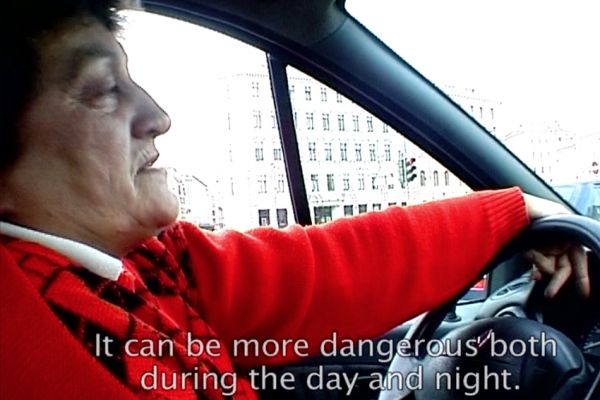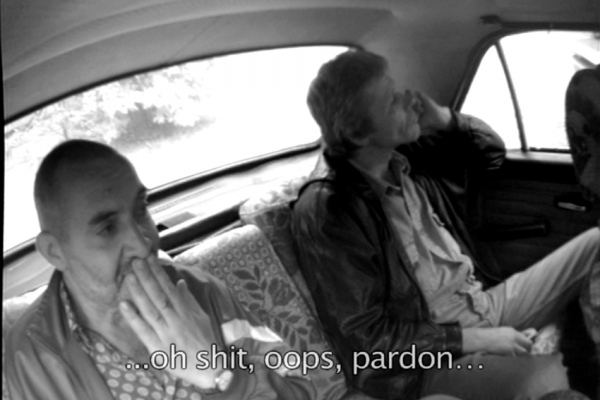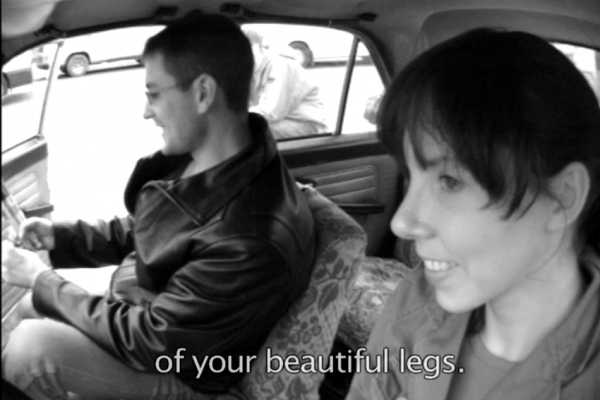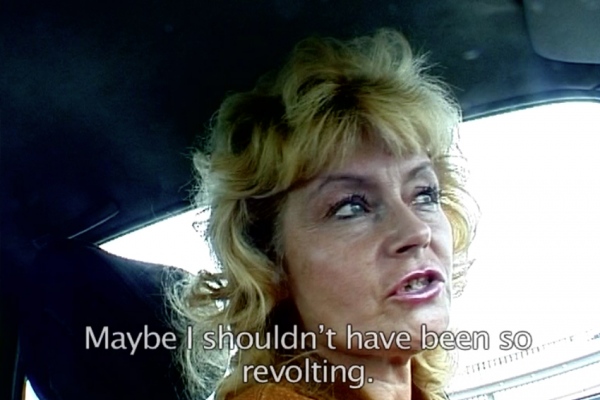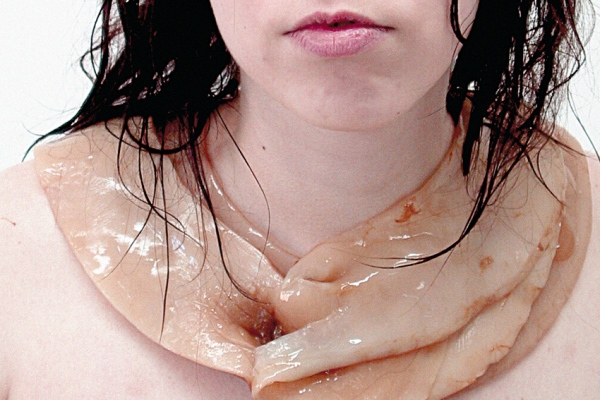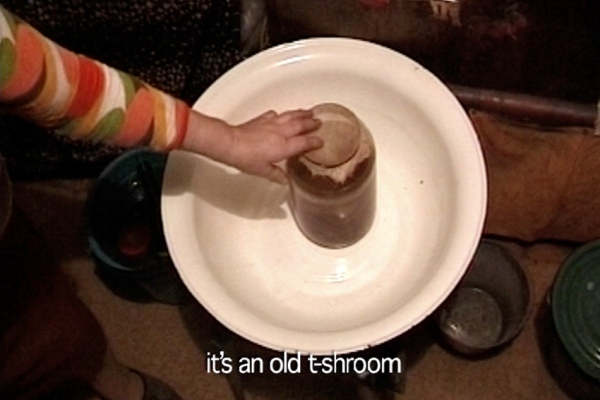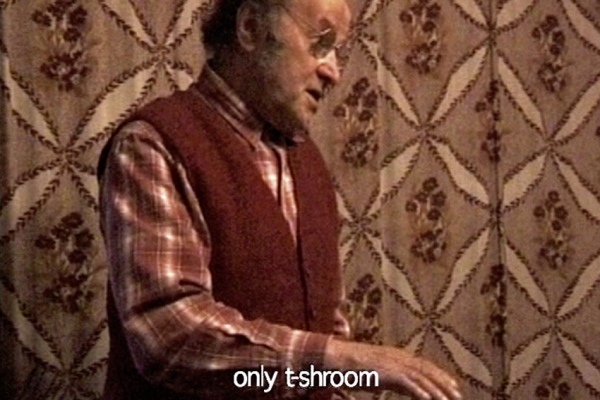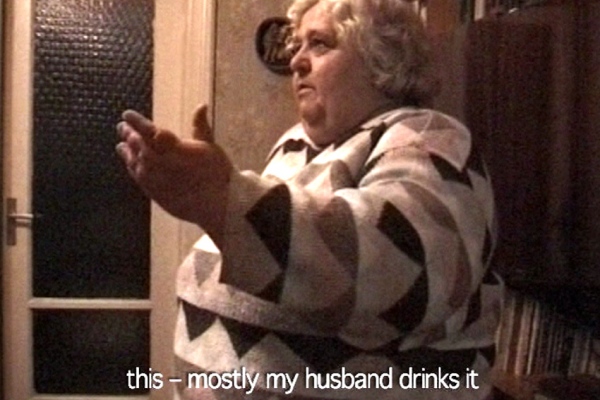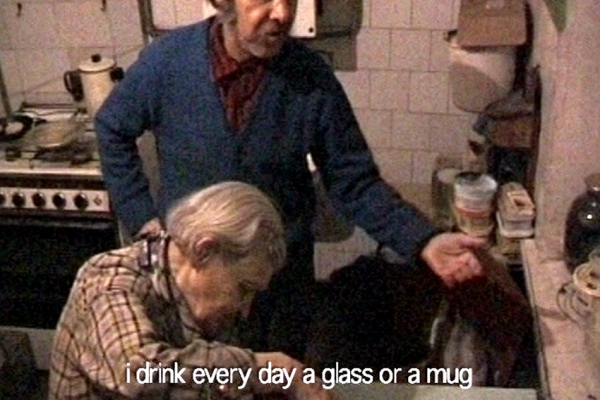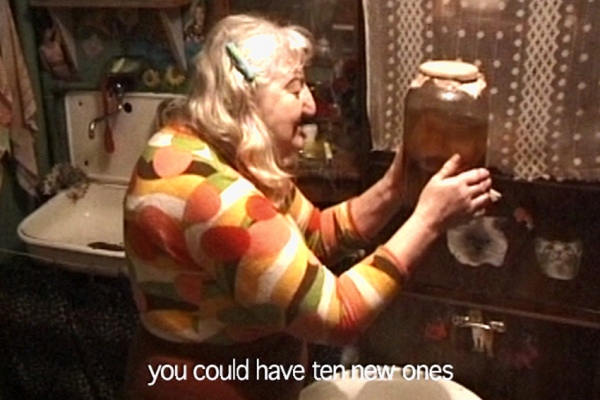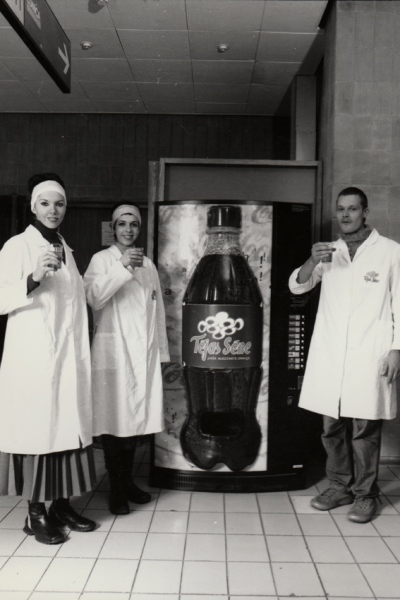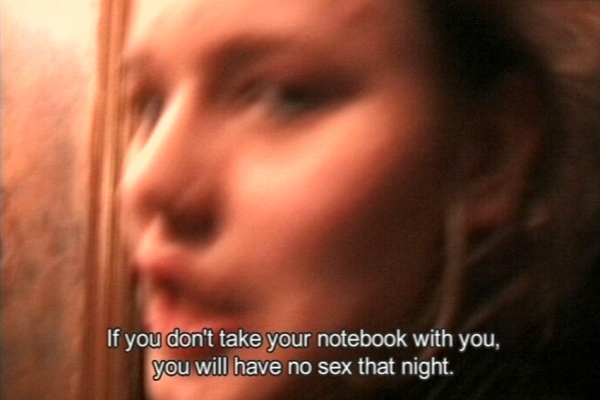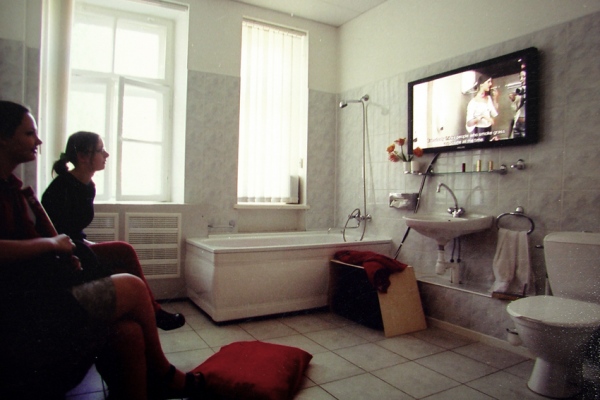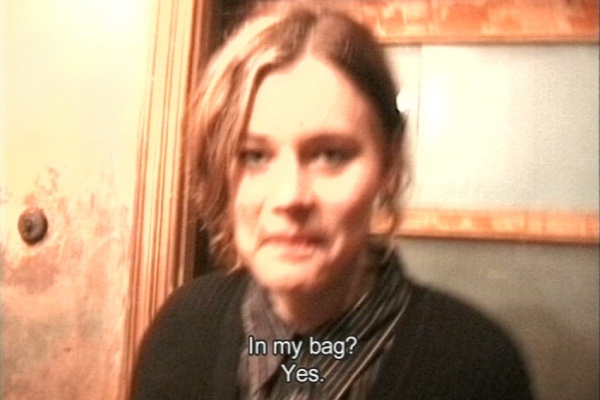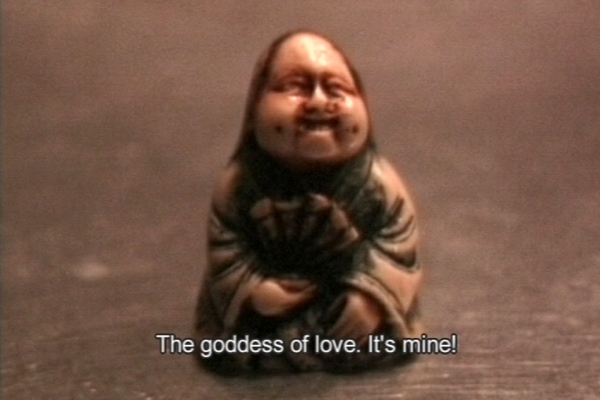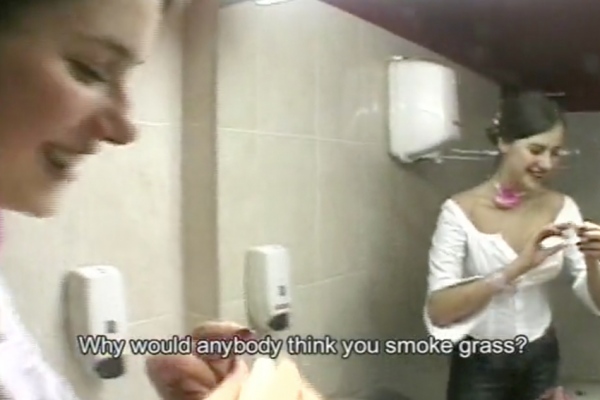-
THE CULT OF ELDERS, ceremony for accepting ageing and mortality, Dirty Deal Teatro, 2025
No one knows when the Cult of the Elders was born or when it will disappear.
It is bound neither to a specific year nor to a specific place.
Every gathering is a continuation of time itself and of what the Sacred Bark once began.
Some claim the movement emerged only recently, others insist its roots lie in ancient times.
Most sources remain silent.The foundation of the movement is a community devoted to ageing and mortality not only as decay or disgrace, but also as a path toward awakening and peace. For life is short and ends in death. Its followers believe that old age is a portal to a different state of consciousness, and that the transition from being to non-being is the very essence of existence.
Those who join the movement will not be promised answers. It will be a gathering without borders – at once a prayer, a conversation, a song, and a meditation. Participation will not be obligatory, yet the moment one enters the space, participation has already taken place.
Founders of the Cult:
Katrīna Neiburga, Iveta PoleTestimonies of several members of the Cult of the Elders:
“My name is Katrīna Neiburga, I am 47 years old, and in 23 years I will be 70. I want to look forward to that moment with joy.”
“My name is Iveta Pole, I am 44 years old. In Buddhism, old age is considered suffering, but I don’t want to suffer. I want to welcome my wrinkles with peace, unafraid of becoming old and unnecessary in a world that worships youth.”
“My name is Edgars Mākens, I am 48 years old. Midlife has already arrived; old age has become something very concrete. I am searching for a way to make peace with it.”
-
BEYOND BEYOND, is an intimate and sensuous installation in public space that explores the transition to the unknown through visuality, sound and choreography, Copenhagen, 2025
Beyond beyond – is surrender to something greater under the almost cathedral-like vaults. As a cross-aesthetic performance installation, it is not just a space for experiences and sensations. It is an act of care that insists on the best conditions for letting go of the phone, the control and the to-do list.
Steeped in playful creativity filled with humor and a twinkle in the eye, director Anika Barkan and her team have once again shown that MØR collective possesses the ability to pierce the cracks of the human premise and vulnerability. Their absurd universes, which often expose the immediate meaninglessness of life, have transformative potential. - Dorte Grannov Balslev
As an audience member, you are invited into a converted caravan. You are met by a soft velvet universe - a cathedral, an enchanting cave, a place where you can take a break from the banalities of everyday life and where, through a unique fusion of music, video, performance and installation, you can surrender to the twisted reality and absurd landscapes of dreams.
Lyricist/dancer Anika Barkan (DK) , composer/live musician Mika Forsling (S) , scenographer/video/visual artist Katrina Neuburga (LV) , dancer Ghazal Ramzani (IRN) . Audience host/performer Laura Hagen Aagaard. Design/construction Livest SIA (LV)
-
SOLOGAMY, personal exhibition, Latvian National Museum of Art, Latvia, 2024
In exhibition devoted to the investigation of sologamy and interpretations of this phenomenon, Katrīna Neiburga, through emotional saturation and light irony, reflects with her characteristic openness and unpacking of individual world. In several video episodes the author focuses on close-up observation of herself in different everyday situations: in a sensitive conversation or passionate argument with herself, a dance with domestic objects to her favourite song, expressions of love and sexuality, accepting herself here and now. Are we searching for justifications for self-respect? And if we are, then – why? Katrīna Neiburga’s intimate art is not an answer to questions posed by others, but a resonant encouragement to gather the will to cross the awkward boundary and finally establish a lively relationship to our own selves. Photo by Antons Georgs Grauds and Georgs Kreislers
-
THE GREAT EXPEDITION, film and installation, with opening performance, Austria, 2024
-
S.O.S , surreal and playful performance, MØR collective, Denmark 2024
Symphony Of Solitude- S.O.S. is a surreal and playful universe full of humor and empathy, sound and images, that sheds light on loneliness, togetherness and the strange dynamics of neighbors. And the way in which neighbors become the background music that accompanies our lives.
The performance takes place in an installation that takes the form of a giant cut-out property, a giant dollhouse, which gives the audience insight into different rooms - a living room, a kitchen, etc. - but also secret rooms.
The rooms are inhabited by lonely, quirky personalities who are in symbiosis with their surroundings, sometimes in scenic stills and other times in frantic activity. They seem detached from each other, self-sufficient in their own little universe, yet strangely connected.
-
AWARENESS, 2023
-
MALLEUS MALIFICARUM, 2023
MALLEUS MALEFICARUM. The new pact.
Written in 1486, the Malleus Maleficarum, also known as “Hammer of Witches”, was for centuries the world's second best-selling book after the Bible.
It is a witch-hunting manual, one which develops a legal-theological theory on the nature of women and portraying the female world as a dark, inverted mirror to our "normal" world. Most evil among all women are the concubines, followed by midwives and the wives who dominate their husbands.
We've found a copy of the book. And, yes, we've read it.
Iveta Pole, Katrīna Neiburga, Agnese Krivade, Jette Loona Hermanis, Anika Barkan (Denmark), Lea Blau (Croatia), Maarja Nuut (Estonia), Martina Georgina (Malta), Irēna Grauda, Kristiāns Aglonietis, Anna Ansone, Karolin Tamm (Estonia) -
"CHILL" AN OPERA, 2022
Far beyond the Arctic Circle, there lives a remote community of hunters. They hunters live far apart from one another, meet rarely and talk even less, light solitary fires, smoke their pipes by themselves, tattoo themselves, check on their animal traps, bake raisin bread, dream of brief, carnal encounters, lace their coffee with vodka, shovel snow drifts, and skin the foxes they’ve caught. Meanwhile, underneath the frozen waves, the sea is constantly flowing onward – as soft and smooth as glycerine.On occasion, followed by the starlight and northern lights, the hunters climb a mountain – alone and insilence –, sit down, and gaze into the endless darkness to recall the sun and everything it illuminates. Then they drop their pants and run southeast.
The opera “Chill” is a tale of arctic ages, regions of wilderness, sweet denial, and a longing that clings deep in your body and doesn’t let go.
The work is inspired by the stories of Danish author Jørn Riel.
Composer: Anna ĶirseIdea and space: Katrīna NeiburgaChoreography: Kristīne BrīniņaDirector: Klāvs MellisCostume designer: Katrīna Neiburga, Berta VilipsoneSingers from the Latvian Radio ChoirPercussionists Juris Āzers, Guntars FreibergsHarp: Ēriks KiršfeldsDancersand craftsmen: Toms Ceļmillers, Agnese Bordjukova, Vladyslav Kobelchuk, Santa Grīnfelde, Imants Ilgažs, Rūdis Vilsons -
HESYCHIA, SANSUSI FESTIVAL, 2022
Music by Anna Ķirse
Photo by JunJala
-
“FOUR ANGLES” by the composer Krists Auznieks, 2022
“Four angles may enclose a seashore, a circle, or a game, but it cannot limit the mind. The mere fact that the sea sweeps the angle off its feet, makes it bend and feel sick – nothing more than sea sickness. Four elbows, the idols of angles crashing against discs – satisfaction from hitting the curvature out of the circle and smashing it in the corner, an angle frozen at zero degrees does not even know if it is a circle or mind beated at an endlessly small point,” recalls the composer Krists Auznieks, talking about his associations and poetry inspired by his imagination, when working on his new composition.
-
BIEŽŅA/TIMBER, 2021, VENTSPILS
Tree insatllation in concert hall "Latvia" in cooperation with Andris Eglītis.
-
METAMORPHOSE, 4 videos in collaboration with MADARA COSMETICS
-
CONSOLATION, EXHIBITION " “FLYING CLOSER TO THE SUN”, 2021, CĒSIS
-
SEKRETJIKI, 2021, SAVAGE, DRUSTI
In my childhood, we often played a very special and mysterious game called "Sekretjiki" in the yard. Each child would bury treasures in a special place in the yard - under the broken glass of a bottle, we would make a composition out of very precious trinkets we found - a bead, a flower, a piece of stone, a bottle cork, and other things. The aim was to create a secret known only to you, which, we hoped, would at some point be discovered by a friend who couldn't help but be amazed by the uniqueness of your secret.
In Wilderness, I replicated this game with my son, assembling huge “sekretjiks” and hiding them under car windscreens. We assembled my treasures picked up over the years on the seashore, a place very different from Drusti, in large magical compositions in the middle of the forest.Photo: Reinis Hofmanis
-
TRANSFORMATIONS. WITCHES’ BROOM. THUDERBESSOM, 2020, SURVIVAL KIT 11
Video installation, sound, Witches' brooms
Viscum album, mistletoe, was the magic plant of the druids, and in Latvia is also called “wind besom” or “wind broom”. At summer solstice the main priest would cut it off the oak/ birch/pine with a golden sickle/knife/sword. The mistletoe would fall on a snow-white sheet held by two to four virgins. According to the druids, the plant could cure any malady.
The plant should be brought home and kept in the shade. After a week, make a potion of the wind besom. Consume it in small sips before igniting scented herbs, for instance, lavender, pine, or juniper. Then, close your eyes, covering them with a silk scarf or handkerchief, and lie down on the mistletoe. An unlit lantern should be placed nearby. You should not consciously look for answers but simply relax and delve into the darkness, imagining it as a water-filled tunnel through which you must swim. You can then sleep or doze until the realisation strikes that you should sit up and light the lantern. Look into the bright light, then turn it off again, and then you will see visions—scenes—or even hear voices that will answer the question that has been tormenting you.
For those who may have forgotten, I would like to remind you that witches’ broom or thunderbesom, or wind besom is a thickening of branches in the crown of a tree resulting from a genetic mutation—except in the case of deciduous trees, where the phenomenon is caused by a fungus, Taphrinaceae, which means that it is a disease and not a genetic deviation. Sometimes the diameter of a witches’ broom can reach several meters.
Foto: Madara Gritane
-
PLAYGROUND FOR ACCEPTING MORTALITY, 2019, KLOSTERRUINE, BERLIN
The idea is to create a 'Playground-Laboratory' in which everyone can bear their mortality, leave their fears of death and the anxiety about immortality outside the Gray Monastery gate, and enjoy a variety of relaxing and life-assuring experiences: reach the state of fulfilment and mindfulness by enjoying the rain in custom-made beauty-sleep pods, experience acupuncture of pranamat carpet between silently whispering reeds. Through the flax maze, get into the rope's amusement park or enjoy the light game through the colourful stained-glass windows and contemplate the slow decay of sculptures made of turf; or to get a slow ride on a carousel, looking at the surrounding landscape as the scenery of passing time.
-
HAIR, 2019, SOLO EXHIBITION IN GALLERY KIM?, RIGA
Works made of hair, ASMR video, documentary video installation, hairdressing performances.
The exhibition ‘Hair’ by Katrīna Neiburga can be seen as an attempt to explore social interactions as a pattern of internally organised relationships. In this context, it is very oriented towards structuralism and the social sciences. However, at the same time, the combination of diverse instruments, such as live and mediated performance, anthropological research, references to culture, mythology and folklore, as well as the use of media, which range from the classic museum-like exhibition of objects to video, photography and installation, provides a playground for a light-hearted and entertaining experience. Perhaps this is the golden ratio between science and art, where the latter serves as a tool to overcome the feeling of alienation, displacement and estrangement, so characteristic of the modern-day world, with laughter, human contact, conversation and curiosity.
Text by Laine Kristberga
Foto by Ansis Starks
-
THE NEST, 2018, RIBOCA, RIGA
The work The Nest (Ligzda) is conceived as an accidentally preserved piece or unnaturally constructed nature in an unusual place.
The Nest (Ligzda) consists of materials that are readily available in the city and which a person who has gone for a walk and wants to make a nest can easily stumble upon: tram rails, trolley-bus wires and horns, uprooted trees, street lights and power poles. Inside the nest, however, there will be a swamp, a bottomless wetland: intimate, dangerous, mystical, full of will-o’-the-wisps, drowned armies, rocks and other objects.
Foto by Ansis Starks
-
A NEW DAY’S REGIMEN, 2018, 16MM FILM, AUDIO DJ SELECTA, 7:05
1. One glass of lemon water in the morning before eating
(the lemon should be frozen and grated)
2. Saluting the sun.
3. Heart meditation. Dance towards all four cardinal points.
4. Love meditation.
5. Money meditation.
6. Aura augmentation.
7. Taking energy:
— pump energy with the vagina, contract lower muscles
eight times, pray for power and blessing from the earth
and the sky;
—lie on the back, raise the hips and hit against the ground
with inertia, — waking up of the area between the hips.
8. Purification of energy and opening of chakras.
9. Face yoga. Each exercise to be performed for 40 seconds
in front of a mirror.
10. Stomach massage - exercise the stomach with the navel
and breath, pull in the stomach and massage it with
spider fingers.
11. Cupping. Providing circulation to the organs.
12. Leeches. A single leech introduces into the human organism
on average 400 biologically active substances and
thousands of ferments. The first leech to be applied
to the tailbone.
13. Breath of fire.
14. Three lobes of garlic to be swallowed whole.
And tomorrow may begin!
Text by Katrīna Neiburga
-
MUSIC VIDEO "KŪKU MARIJA", 2018
When life becomes too much to bear- you ought to lie down in a hole in the ground and ask someone to bury you. Spend some time in there absorbing Earth’s energy. As you crawl out, assume a new name and live on like there’s nothing to it.
Text by Katrīna Neiburga
-
PICKLED LONG CUCUMBERS, 2017, VIDEO WORK ON TWO SCREENS, 11:44
Two-channel video-work consist of a material that has been filmed during the summer of 2017 spent in Drusti – the place owned by the family in the countryside of Latvia. That’s the same place where Eglītis has been painting his so called “earth-works” for around ten years now combining the soil, sand and clay he has obtained on site with acrylic and oil paint. The video and the paintings tell a story about a tribe-like co-existence, on every-day life and living together, on the impossibility being completely “natural”. Three re-appearing characters – Katrīna, Andris and with their four-year-old son – performs various activities that might appear irrational, but within the pace of the video that has sound by Canadian electronic music producer Richard Hawtin aka Plastikman, they suddenly seem like the most natural thing to do in order to survive in the wilderness. An Adam-and-Eve-like couple explores their imperceptible surroundings letting the viewer come face to face with the unbearable ease of existence. Documental fragments of making dinner on an open fire and exhuming beaver’s dam mixed with very eye-pleasing scenes from the marshy corners of the forest and birds flying above the tree tops and oil and plastic pollution floating along the stream of a brook captures a portrait of three people that has so to say “returned to the roots”. It makes us think about the meaning of the term “natural state of being” and human of today and helps us grasp the true worth of being only remotely subjected by relentlessness of the nature and affected by its manifestations in a form of a heavy rain, a storm or a drought.
Text by Elina Sproge
Stills from video by Neiburga
Foto by Ansis Starks
-
MUSIC VIDEO "AUTUMNWINTER", 2017
As a side project of photographing for the Queen Anna album cover art I managed to film the creative process. Out of this footage sprung idea of music video. It was a unique opportunity to capture easiness of all involved, and strangely magic place with people doing seemingly illogical and mysterious things.
-
WILL O'THE WISP, 2016, VIDEO, AUDIO, LIGHT AND ARCHITECTURAL STRUCTURE, WITH ANDRIS EGLITIS, KOCHI-MUZIRIS BIENNALE, INDIA
Will-o’-the-Wisp is a multimedia installation in dialogue with a wealth of new age spiritual practices and world religions. Drawing on a global architectural vernacular that includes do-it-yourself cultures, their structure will incorporate local building practices and construction items as well as organic material found from the territory where it is directly built. Will-o’-the-Wisp not only reminds us of what we seek when we cannot name a presence, or attempt to catch the glimpses of light that symbolise absolute truth, but also what happens when our senses disappear and our barriers to ‘experience’ as a type of unmediated and undeniable thing allow us to go deeper into ourselves.
-
ENLIGHTENMENT IN THE BASEMENT, Video, sound and light installation, 2016, festival Survival Kit 8, Latvia
1. An event of rare occurrence, which (according to mythical or religious beliefs) takes place under the impact of supernatural forces.
//Fantastic occurrence, which is not possible in real life.
Miracle stories/fairy-tales ‒ stories with many imaginary elements in the plot.
Signs of miracles ‒ an indication or evidence allegedly proving that the miracle will come true in present or future.
// adjective. Miraculous – surprisingly wonderful, extraordinary.
2. A very unusual, uncanny event, phenomenon.
Miracle works colloquial ‒ spectacular, hard to believe events.
3. Something wonderful, hard to believe or awe-inspiring.
4. usually in plural. State of amazement or sensation that is very surprising, astonishing or wonderful.Foto: Andrejs Strokins
-
ARMPIT CALIFORNIA EDITION, (with Andris Eglitis), 2016, Coachella Music and Art festival, USA
-
ARMPIT, (with Andris Eglitis), 2015, 56th Venice art biennale, Venice, Italia
ARMPIT is a sculpted system of building constructions by Andris Eglītis and Katrīna Neiburga interwoven with video-stories about a peculiar local phenomenon, "garage elves", who tend to spend their leisure time tinkering with various mechanisms in workshops set up for this hobby.
It was inspired by a sample of vernacular architecture with local character – the Soviet era co-ops of private garages whose owners have adapted them for the hybrid use as workshops-cum-dachas. Today some of the garages have been turned into living spaces. Others house workshops. In some, cars are still kept. It is a closed male commune, a monastic brotherhood that includes retired blue-collar workers of a planned economy and engineers from factories closed in the course of neo-liberal reform. With the enthusiasm of alchemists, they are continuing to occupy themselves with inventing, constructing mechanical devices or re-soldering microcircuits pulled out of second-hand gadgets.
Foto: Ansis Starks
-
UNTITLED, (with Andris Eglitis), 2014, Survival Kit 6, Contemporary Art Festival, Riga, Latvia
-
BEFORE AND AFTER, 2014, 10x12 inch plate photography, Riga Art Space, Latvia
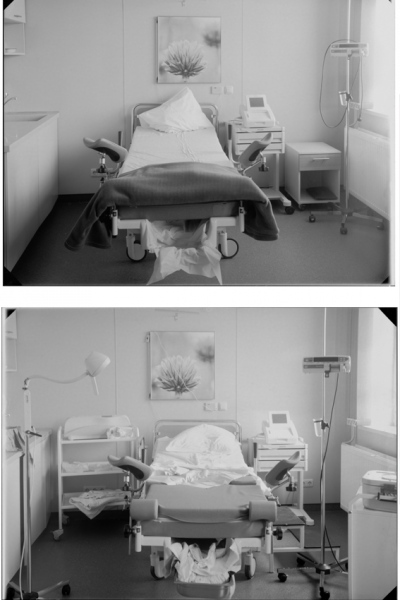
Before–After. Girl, 3850 g, 20:30; Girl, 3850 g, 09:54 / 2014
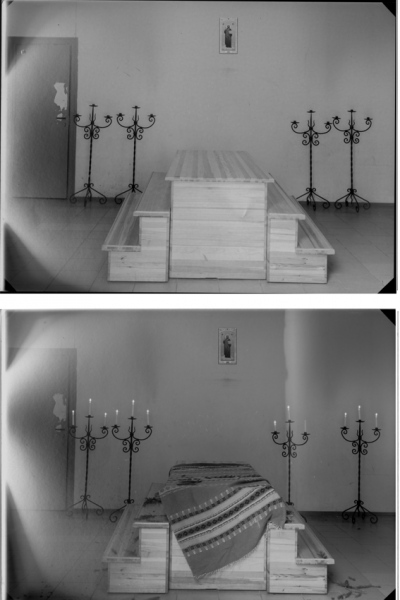
Before–After. Woman, 88 years, 13:00; Woman, 88 years, 13:25 / 2014
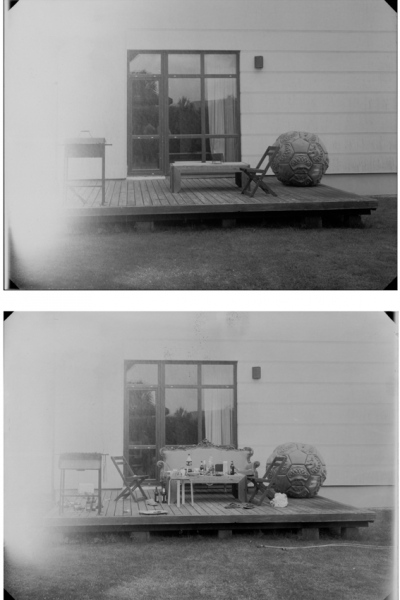
Before–After. Rest with Quarrel, t° 28, 12:00; Rest with Quarrel, t° 28, 14:00 / 2014
-
MEMORY OF THINGS, video installation, 2012, gallery kim?, Latvia
The ‘Memory of Things’ installation by Katrīna Neiburga featuresa reconstruction of an authentic home interior and refers to a familyritual habitually observed in these walls: cosmetician Alexandra visitsthe flat to give pedicures to the three women of the Neiburgs family, eachone belonging to a different generation – Katrīna, her mother and hergrandmother. The artist has recorded separate episodes of the ritual in avideo projected onto various spots all over the installation. Embedded in thephysical environment, and visually creating the effect of being imprintedon it, the scenes flicker here and there like visualised memory flashes, likesome sort of wondrous apparitions – but sometimes, almost like sinisterghosts from the past. The memory of things and the memories of peopleare intertwined here in a single ornamental constellation.Obviously, in this work we are once again dealing with organisingexperiences with the help of a constellation of objects. Except this time,these are social facts, i.e., relationships between people, that are describedthrough these object relationships. And just like ornament sees the spatialdimension (for instance, the infinity of the starry sky) unfold on a certainabstract or real plane, so does it tend to present asynchronous events ashappening simultaneously, here and now. The whole history of Alexandra’svisits to the home of the Neiburgs family, extended in time as in real life, isbeing presented in ‘Memory of Things’ – in a set that can be scanned witha single glance, at a specific moment in the present time.Text by Viktor MisianoFoto: Andrejs Strokins
-
PRESS HOUSE, video installation on 3 screens, 2012, Finland
Press House is a twenty-two story building in Riga, built in 1978 to host different publishing houses, editorial offices of newspapers and magazines, as well as a printing house. Left abandoned since regime change due to dwindling profitability, Press House was once an important place where its workers were constantly negotiating the freedom of the press with the boundaries of censorship.
The artist’s interest in Press House starts with the people who once worked there. As either complicit in or terrorized by censorship, they spent an impressive part of their lives on site. Neiburga has very special personal memories of the building since both of her parents worked there. During her school years, she edited her school’s newspaper Glasses, which was printed in Press House under the supervision of poetess and publisher of children’s books, Inese Zandere.
Her children’s playground was the café filled with cigarette smoke, the huge elevators, the seemingly infinite stairs, and the labyrinth of rooms. The artist has involved numerous former Press House employees in the project, from the concierge to the director and managing editors of its magazines and newspapers. Their stories restore the feel and look of bygone days. The work weaves a poetic documentary narrative of the memories concealed in the minds of people and the abandoned building. A slowly moving camera explores spaces abandoned long ago while it encounters people who once worked there.
-
IN REALITY, 2010, video installation on 8 screens, Latvian Railway History Museum, Riga, Latvia
-
STRUCTOR STREET, video installation on 10 screens, digital print, 2006, Madrid, Spain
-
SOLITUDE, video installation on 3 screens, 2005, Gallery Le Plateau, Paris, France
What I have created this time is very intimate. It’s about universe of objects in which a person appears once in a while- a woman kept captive in the
order of the material world. The living woman sometimes seems more unreal than, say, a closet, a vase or a dish on a table to me, her essence as
impenetrable as that of an inanimate object. The film attempts to feel out any evidence of her existance and yet- what it does bear witness to most of all
is her loneliness, the secret of each and every human being, never ever reached by the sound of the world around. We are all of us alone- and always.
Even your own child needs you as long as it’s physically incaable to deal with the world. This is not a shocking ar a novel revelation- but it’s very important,
recognisable and as ancient as the world itself.Text by Katrīna Neiburga
-
SPAMATREX, 2005, Macedonian Museum of Contemporary Art, Thessaloniki, Greece
Katrīna's installation consists of two seemingly separate parts ― the active digital medium and the passive role played by the viewer. A loop of an endless song with lyrics put together from bits of spam mail texts, performed by the author, on the monitor; a printer connected to a computer producing printouts of fresh spam mail, a lit reading-lamp, frozen masks of the author's face ― exactly like the ones used by the characters in the video ― on the wall. There's a lot of everything. And yet these elements, including the viewer, are parts of a unified system, a single show.
The structure of the work is hinged on the juxtaposition of the active, living and efficient digital medium and the numb and "dead" real world, the viewer's space. His/hers is only to see and hear. Even the computer is completely non-interactive, it's a programme the viewer is unable to adjust in any way. The key actors are the video and the set... The video is a story within a story. Blind, dancing masks. Responses provoked by human actions. Things and processes that can't be changed anymore. Everything is completely irreversible. There is no way of going back and retracting what was once committed. The consequences of your actions ― you either live with them or... The spectator becomes the guilty party. The recurrent spam printouts are a constant reminder of that. The mute masks on the wall, the inability to exert any influence on anything. Except by destroying. The song and the video are like a promise of escape. You'll only have to watch. You'll only have to listen. And yet even that is but a futile illusion. Even though you have paid your entrance fee to this art show.
Text by Ojārs Pētersons
-
MAGIC THINGS, 2005, horror movie
Practically any work by Katrīna Neiburga can be treated as an aesthetically well-defined and documentally recorded action on at least two parallel levels. The first is the apparent one, the one commonly known as the visual dimension of a work of art. In The Magic Thingsit's a 14 minute video. The second level is the one in which the viewer's comprehension takes place. Ideally it relates to the artist's train of thought during the process of creation. However, it’s actually nothing like a seemingly endless process of reflection for the simple reason that, just like with Bertolt Brecht, there's an ongoing collision between the visible action registered by the camera and the instant response in our brain. This sort of temporarily limited trans-thinking doesn't leave an impression of a mystery, of something withheld. It’s a way of looking at things which is the basis of active and socially critical art and may be lacking in what is often referred to as metaphysics, but is free of clumsy kitsch and forced affectation. The viewer watches the goings-on with some amazement and realises with a sigh (and, if it's Katrīna Neiburga's works we're talking about, also with a smile) that, well, this is what the world has come to. The fascination with the work presents itself through the precise rhythm, fantasy, intense energy and a desire to watch similar projects again and again.
The Magic Thingscould become a textbook example of the way European critical thought demonstrates in a simple little production society's self-sufficient culmination in absurdity, namely, in consumption for consumption's sake, with all the rituals that stem from it. It's just like Coca-Cola ― no-one in the 19thcentury would have ever thought of demanding a soft drink it like that for the simple reason that it hadn't been invented yet. Nor had the Handy Homeconsumer goods sales catalogue, which Katrīna has made use in her witty and painstakingly produced video. Objects that come to life in this "theatre" are actually being manufactured, sold and delivered to a consumer who chooses them from the said catalogue.
Nothing special about it, it would seem ― it's two actors playing a married couple out of town. But the family's ostensible time-out while picnicking is nevertheless nothing but a relentless fiddling with absolutely useless contraptions. In the dead of night when the owners are asleep the things carry on with their affairs like the protagonists of a modern fairy-tale, the promise of ladolce vita. They are not witches, Thumbelina and Little Red Riding Hoods but mass-produced consumer goods which to some people may possess a certain poesy. Katrīna Neiburga's magic things are not evil, neither are the people who use them. It's a slightly sad and funny but still endearingly ironic take on our times, the judgement of which should not be based on the domain of the apparent and the material.
Text by Helēna Demakova
-
TRAFFIC, 2003, re:public, International Art and Culture Project in the suburbs of Riga, Latvia
Few of us have ever had a heart-to-heart with a taxi driver. Not just about the rates or the route ― about the spots passing by the taxi window, the rising prices, politics: in short, about life in general. That sort of conversation may turn either into a confession and solace offered by a stranger, or a tour through city territories and mundaneness.
Likewise, few of us have ever come across certain collector types who go for other people's stories, extraneous experiences which intertwine with their own in a peculiar sort of fabric. Katrīna Neiburga is one of those people who collect stories ― on cultivating tea fungus, on what girls carry around in their handbags, on things normally told to no-one but a taxi driver or a random fellow-passenger in a train compartment. And yet Katrīna is not a true collector. It seems to be very important for her to be a part of the conversation, to spin a yarn and have a go at asking the person she’s talking to questions important to herself. The artist's vital curiosity channels anthropological "archaeology" into creating a contributor-orientated situation.
Switching from object to situation in her practice of art Katrīna performs a virtuoso balancing-act between documentality and fiction. Having decided to make a temporary change of occupation and become a cabbie she taxis around residents of the Pārdaugava suburbs, talks to her passengers, listens to their stories and registers them. And afterwards visitors of the re:publikaproject and chance passers-by who happen to take an interest are offered an opportunity to spend some time in the old Volga car and watch the taxi driver's dialogues with her passengers on a little monitor.
Accident combined with a staged situation, or rather an arbitrarily made-up set of rules, makes for ideal psycho-geographical premises. The unscheduled taxi routes and unpredictable people act almost like a drifting derivation method, allowing the revelation of a surprising urban texture and one to lose oneself in the stories told by random passengers.
The second part of the project consists of Katrīna's interviews with female taxi drivers; this time it's not just an extension of situative context but also a materialisation of focused interest manifested in the Sestais elements(The Sixth Element) women's art project and in a study of interplay and succession in her own family’s female line. Women's position determined by social roles and traditions without explicit feminist articulation becomes the subject of the artist's analysis.
The grey-haired taxi driver's stories of curious incidents dating from the Soviet era, her family problems, adventures and worries about an insecure future create a portrait of a strong woman ― one it's so easy to identify with if you live in Latvia. Assembling assorted fragments of other people's experiences is Katrīna's way of making marginal notes of sorts and possibly of getting closer to eventually writing a body matter on herself.
Text by Solvita Krese
-
THE T-SHROOM, 2002, (with Pēteris Ķimelis), Malmo, Sweden and Gallery ibid.projects, London, UK
-
WHAT IS IN A GIRLS HANDBAG?, 2002, The 6th Element, International Women Art Exhibition, Riga, Latvia
TheWhat Girls Have in their Handbagsvideo has always reminded me of an earlier project by Katrīna ― a study in which a camera follows through a car window an old man's progress along a muddy and wintry monochrome suburban street. Matching the electronic soundtrack, the digital picture rewinds the man’s steps, tangles them up in loops, before permitting the object of observation to continue on his way. The mischievous remix not only betrays the artist's affiliation to the late 90's phenomenon labelled the Scratch Generation by Estonian critics but also reveals methods and motives expanded in her later works, including the "handbags".
First off, the documentalism and "voyeurism" provoked by the artist's curiosity about the world around her. "Curiosity has become a compelling, irresistible passion" ― the motives of lack of experience, curiosity and looking for the transtemporary in mundane details in The Painter of ModernLifeby Charles Baudelaire could serve as an introduction to the imagery of a number of Katrīna's video works. The greedy perception of life characteristic of a child or a convalescing patient referred to by the poet is these days registered by the video camera. Katrīna's works are anthropocentric, it's herself or her contemporaries who are in the circle of her attention; true enough, the latter are more of a mirror that reflects the congruence of social roles, objects and signs of the Zeitgeist. Katrīna's projects may be seen as either anthropological and psychological, or egocentric; after all she is getting acquainted with herown time, herown living-space ― the city — and herpeers.
Another peculiarity of Katrīna's works ― they unravel lineally, like a journey. The narrative thread adheres itself to the back of an old man, the faces of her interlocutors or wanders off into the mirrors of ladies' rooms in nightclubs; the rest is the teamwork of the camera and reality. The question: ― What do girls have in their handbags? ― is nothing but a point of departure; it's just about as profound in itself as the psychological test in a woman's magazine treating the shape of a lipstick as a sign of its owner’s temperament. The video follows fragments of the beat of dance music, changes of lighting, increases in the pace of the answers. It switches from the general contents of the handbags to distinctive objects to all sorts of lucky charms, condoms and cosmetic brands to advice on carrying around a one-dollar note. Just like Georges Perec’s novels, the empire of ready-made objects and interior design sucks us into a vision of personal history, commentary, relationships and the times. The destination is variable, the video is roaming the space of experience.
What Girls Have in their Handbagsconsists of two parts1: the fieldwork carried out in Riga nightclubs — or the process — and the summary: the film. The empirical experience takes place live. In spite of the camera taking special care to keep away from mirrors reflecting the artist during the film, the viewer still witnesses a very active conversational process ― an interview, some off-camera encouragement. Performer participation and process is characteristic of both Katrīna Neiburga's audiovisual performances and her work in other media. Self-exhibiting and performativeness are both recognised as strategies in gender theory: "...gender is an "act", as it were, that is open to splittings, self-parody, self-criticism, and those hyperbolic exhibitions of "the natural" that, in their very exaggeration, reveal its fundamentally phantasmic status".2The powerful and, once again, personal feminist rhetoric of Katrīna's works is particularly pronounced in the "handbags", a project on girls, filmed while polling ladies in nightclub loos and first exhibited in The Sixth Element, an interdisciplinary project by "lady artists" carried out with Katrīna's help.3
Delving further into the context of the Scratch Generation and club music it becomes apparent that the constant theme and variations of nuances and rhythm are reminiscent of the musical structures in minimalism or, perhaps the artist’s favourite genre, electronica. Repetition or developing a theme through variations adds integrity and poetry to Katrīna's works; translating it into a video story, a form unfamiliar to this technique, allows her to linger on the borderline between routine and the continuum of time in life. The rhythm of observation and self-identification knits together the changing characters, musical background, individual mental experience and the dark human shape trailed by a car.
Text by Māra Traumane
